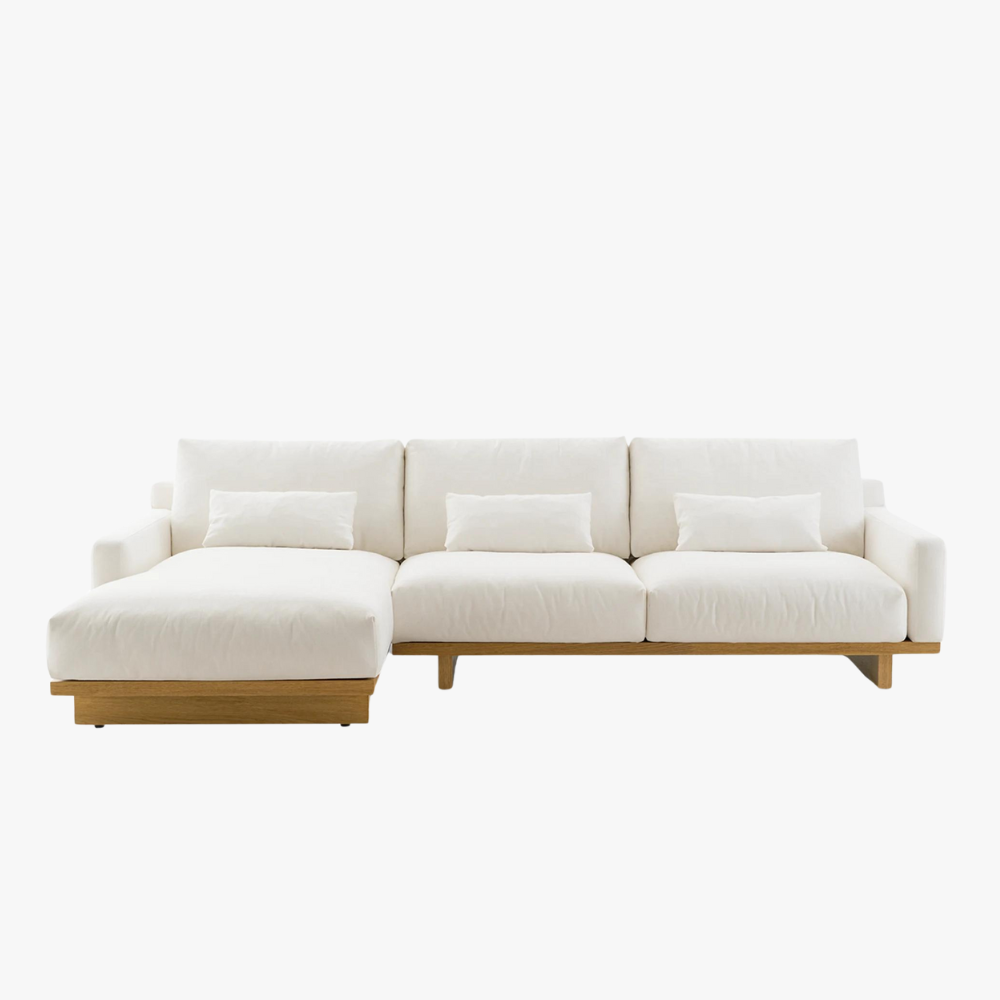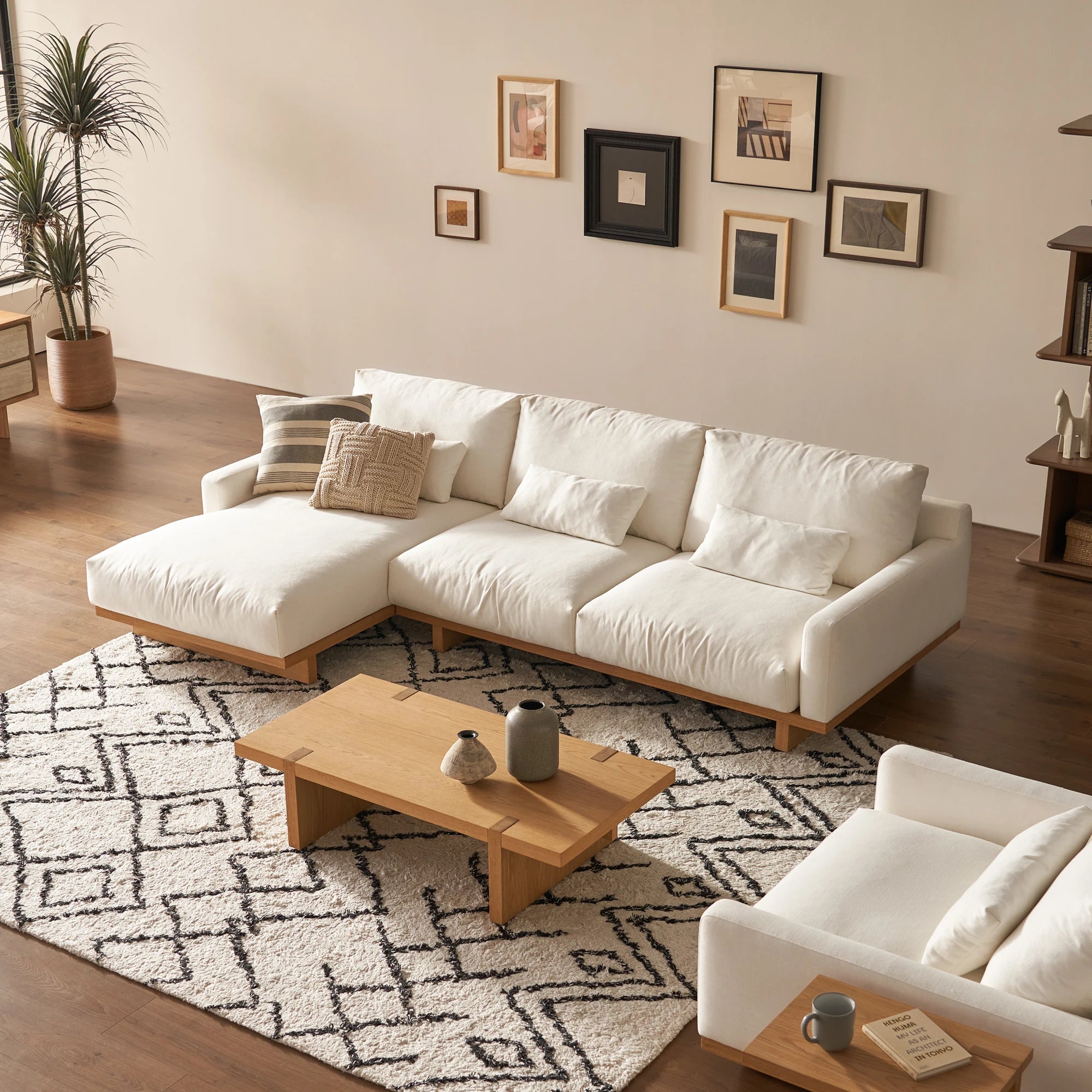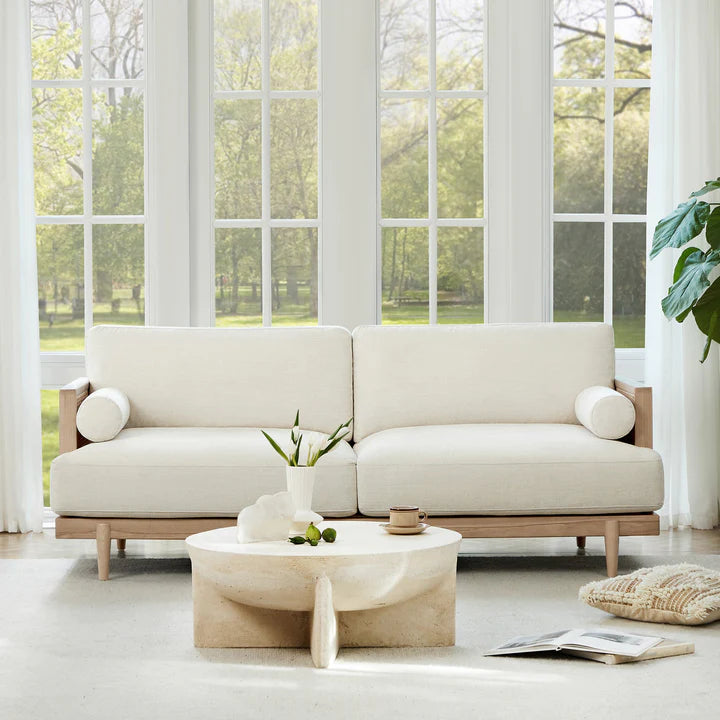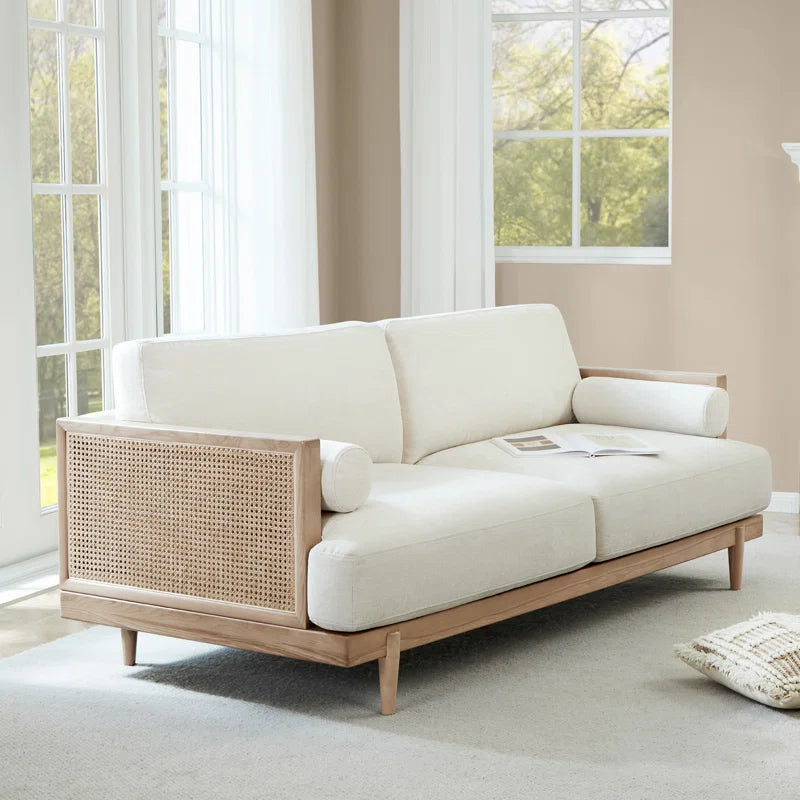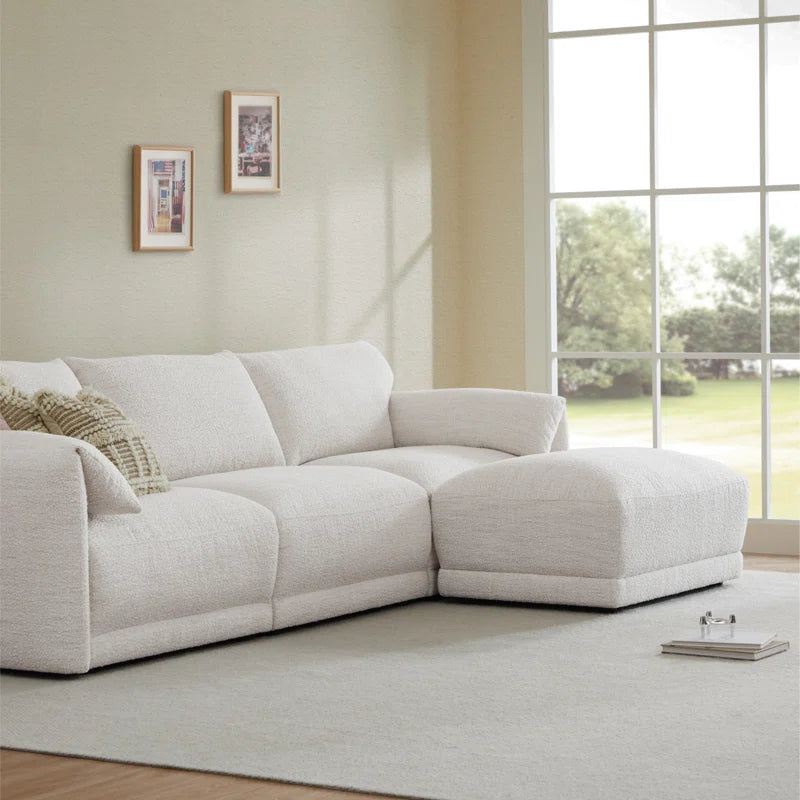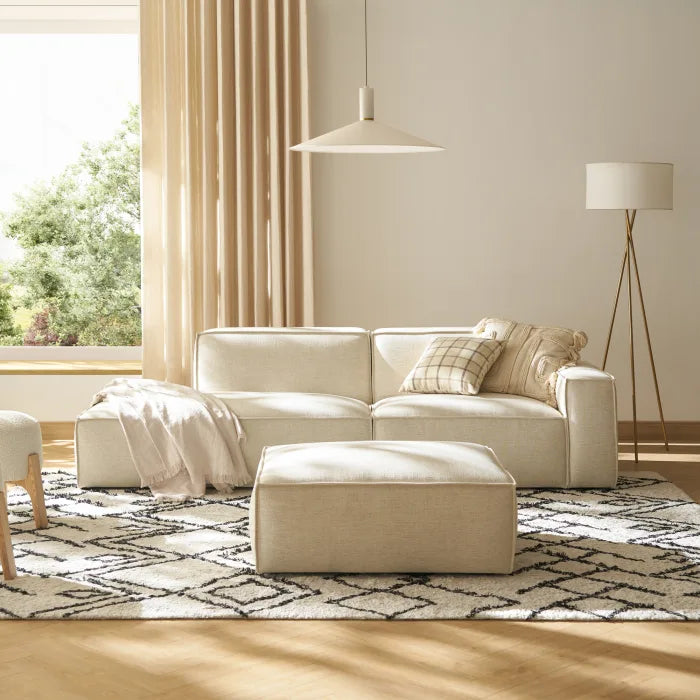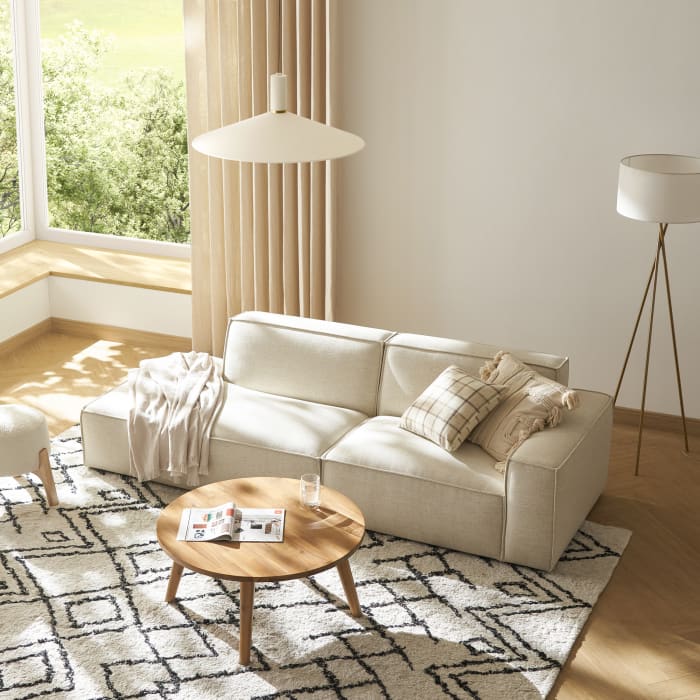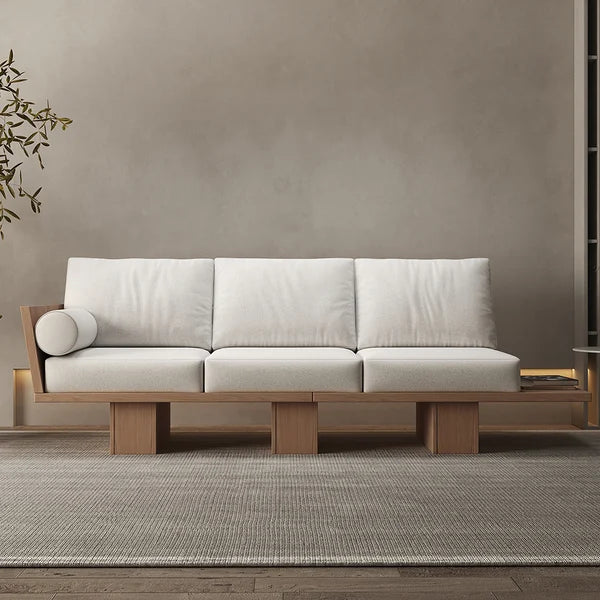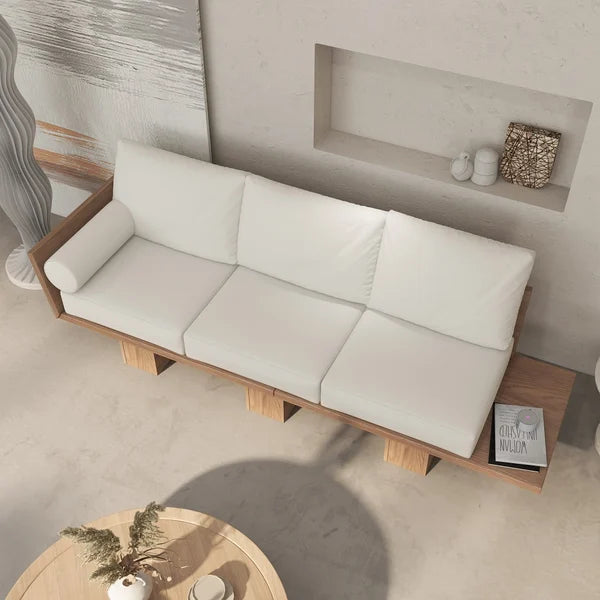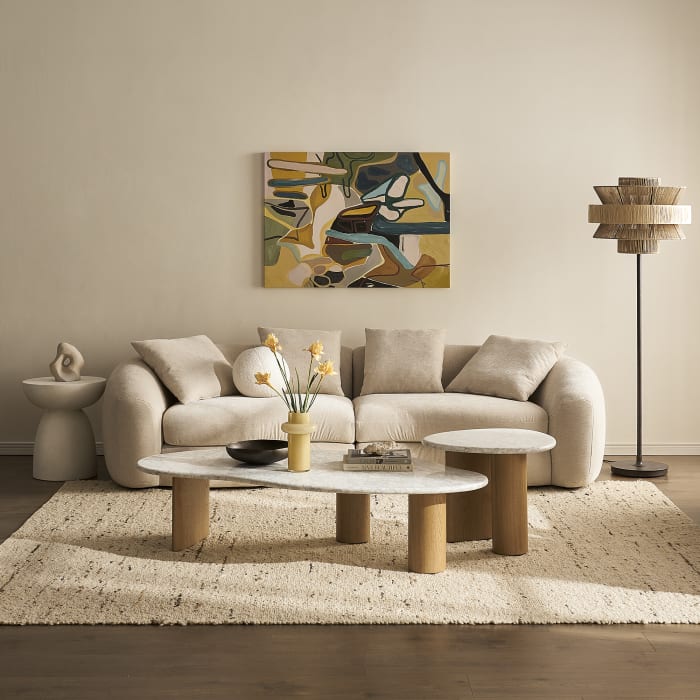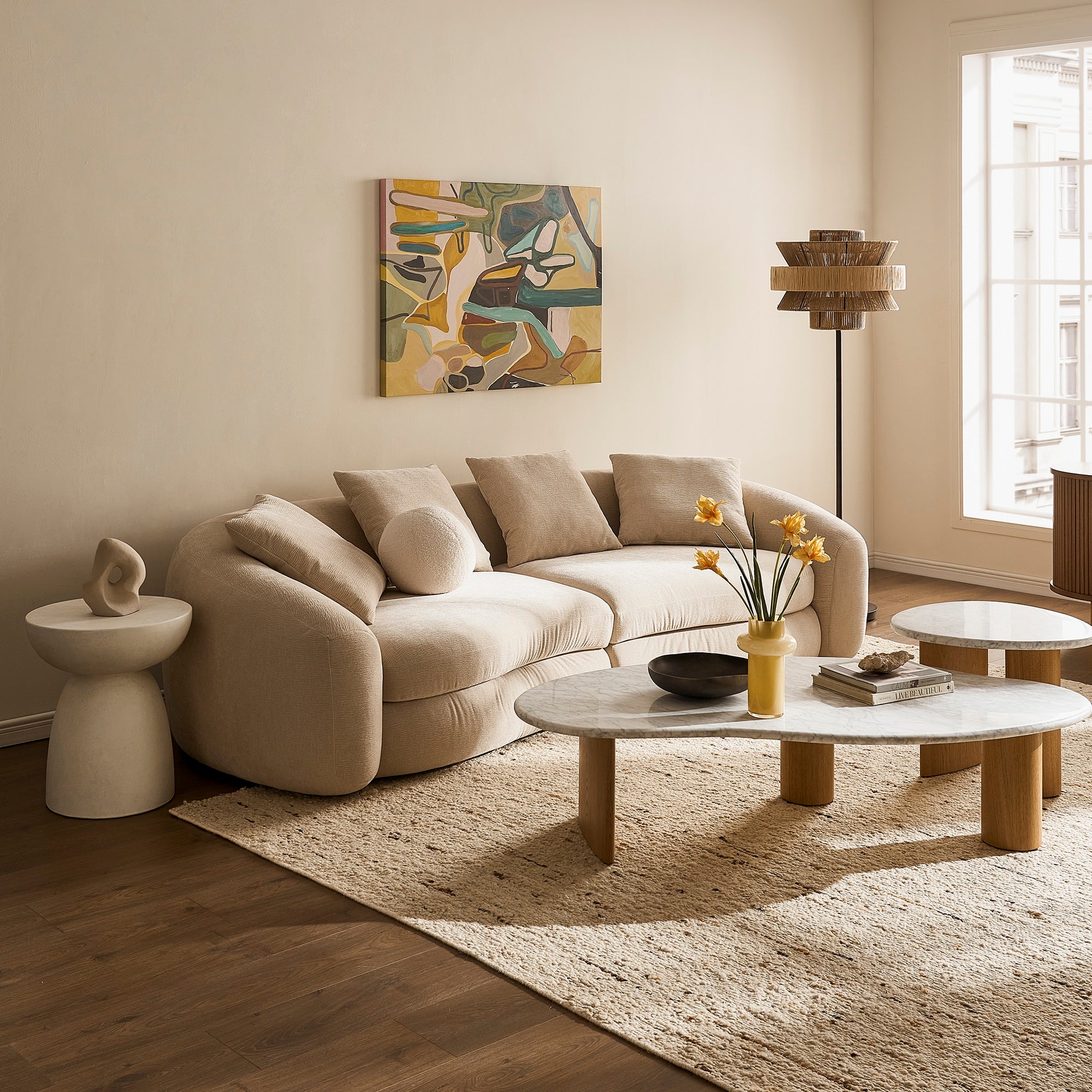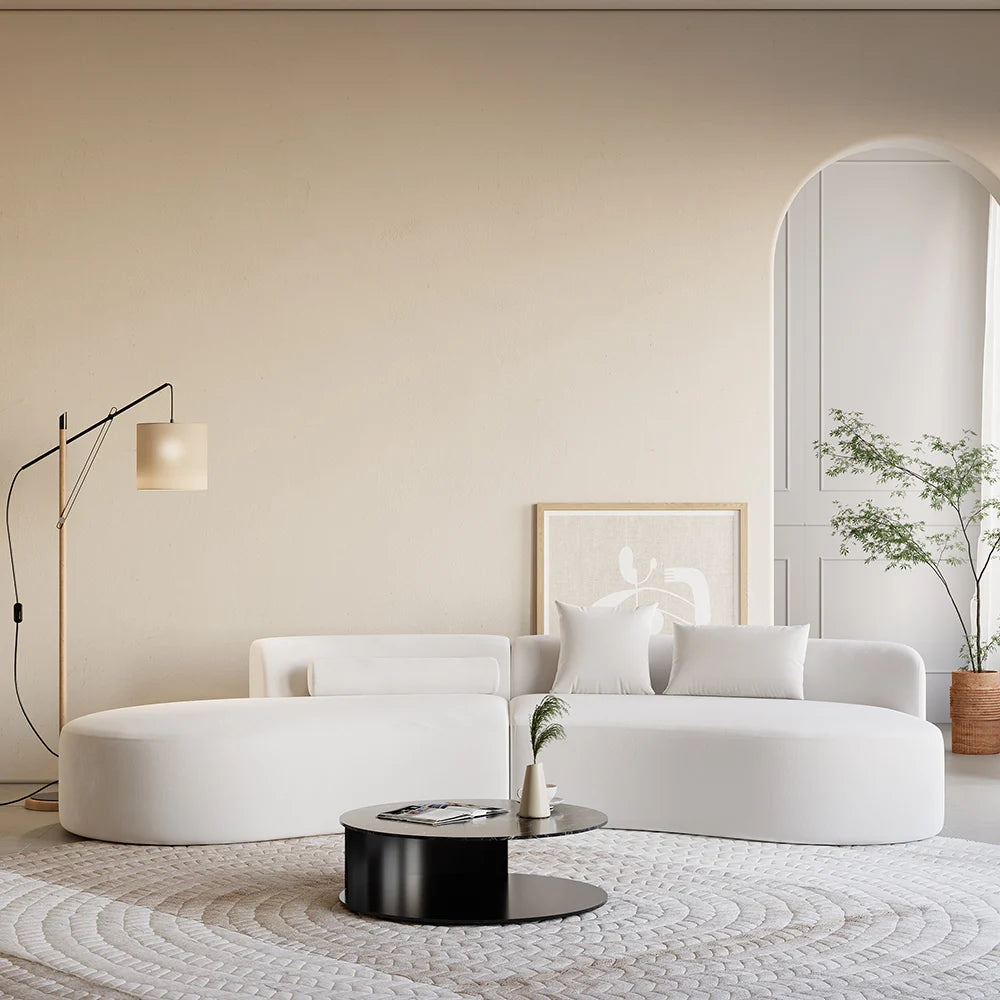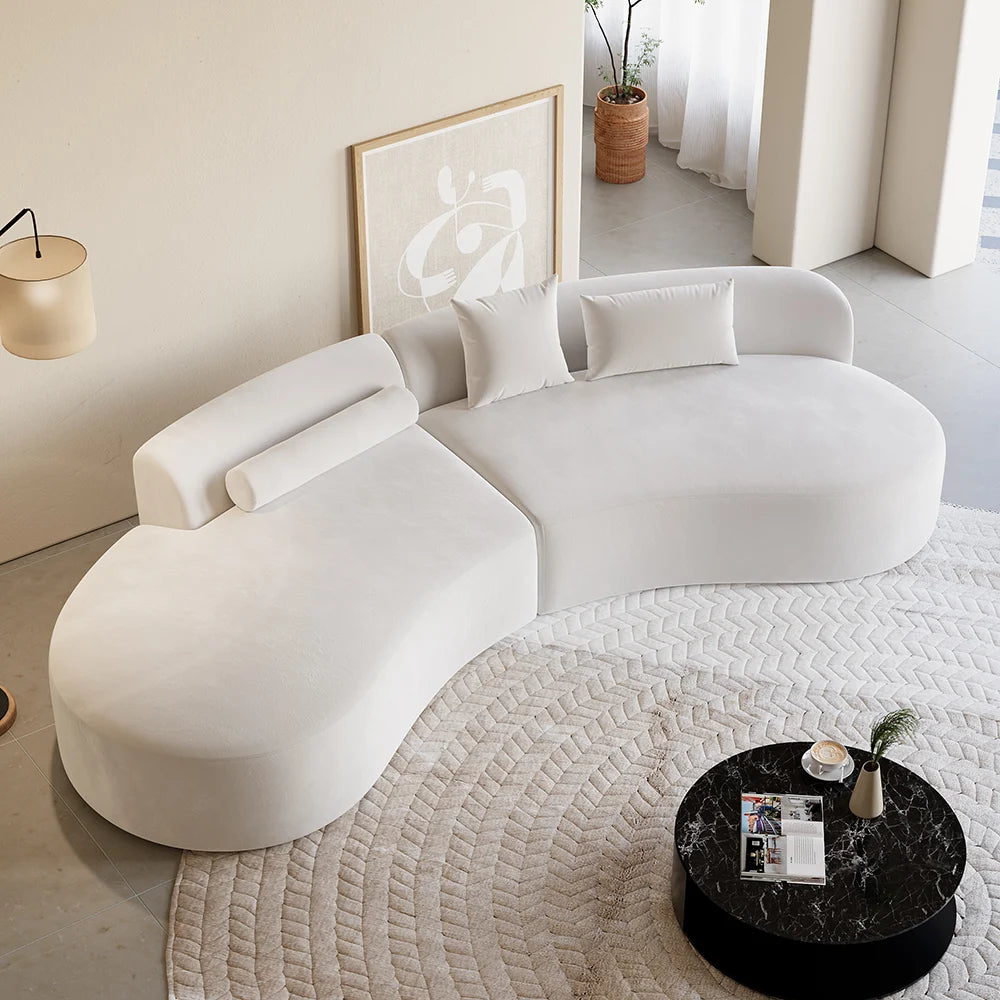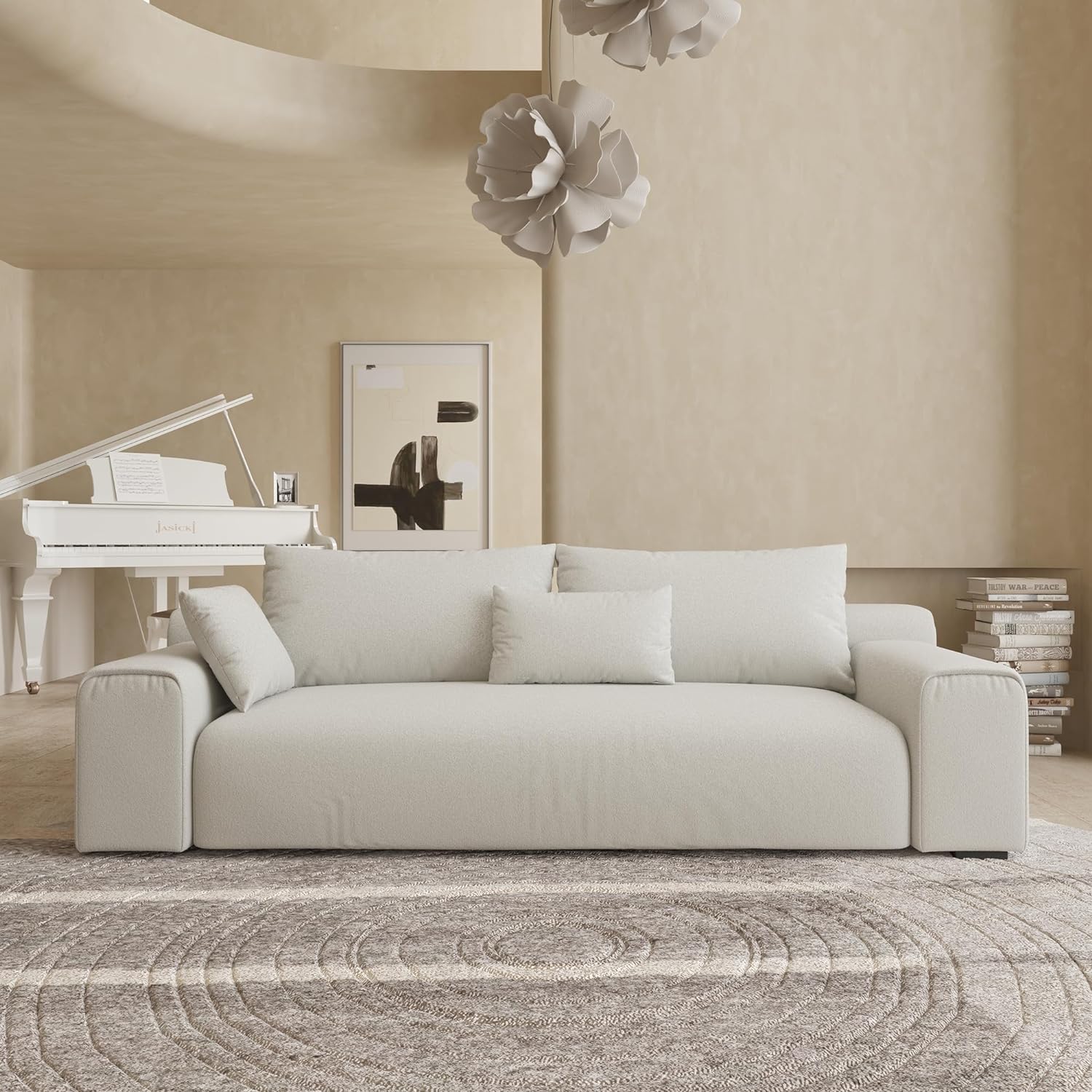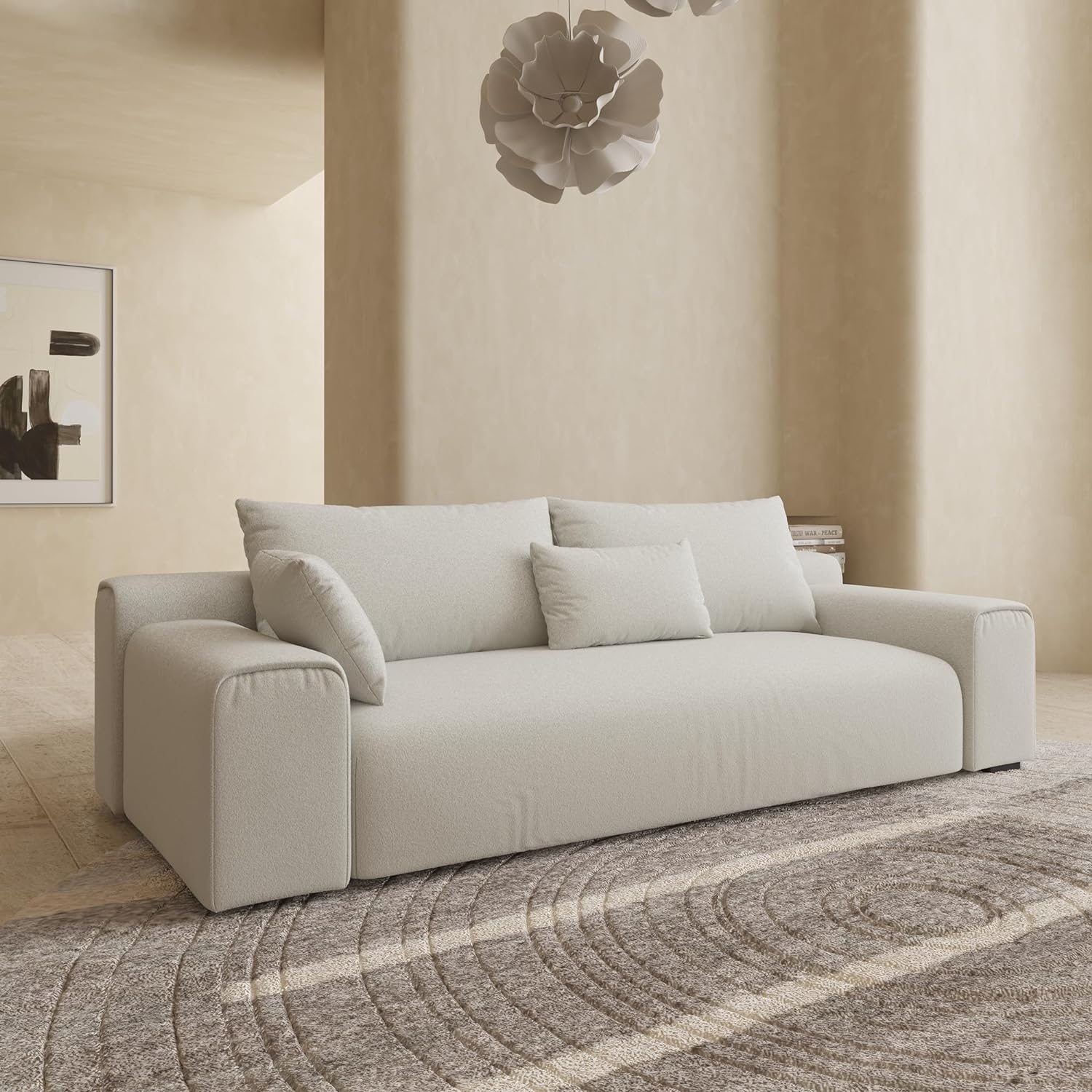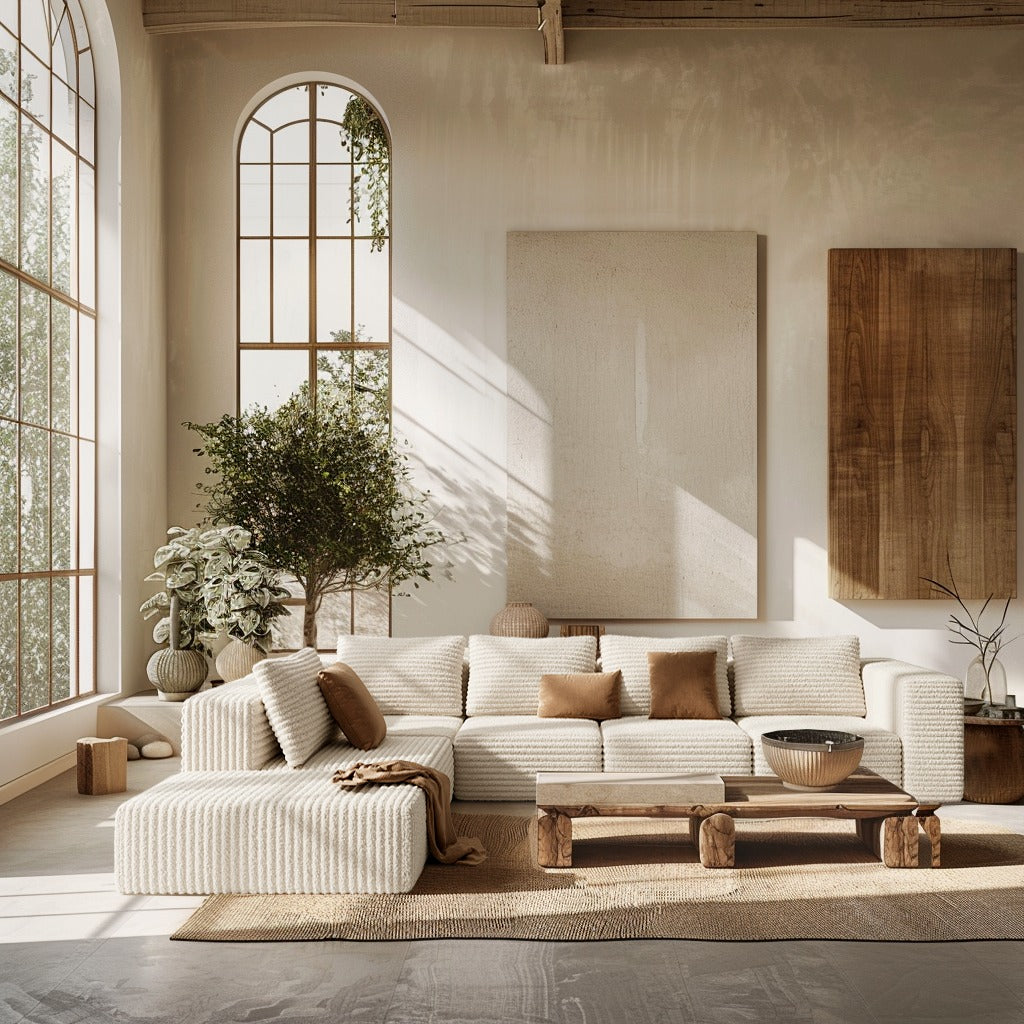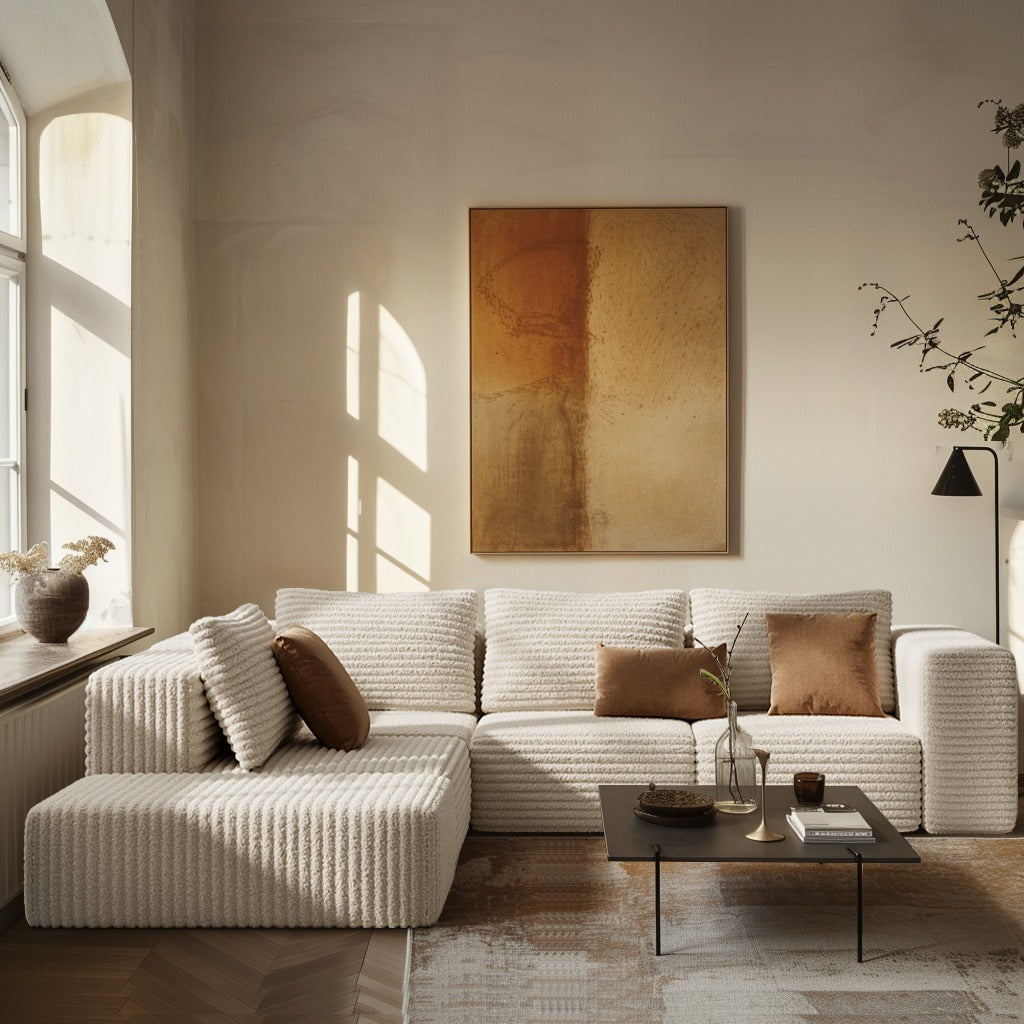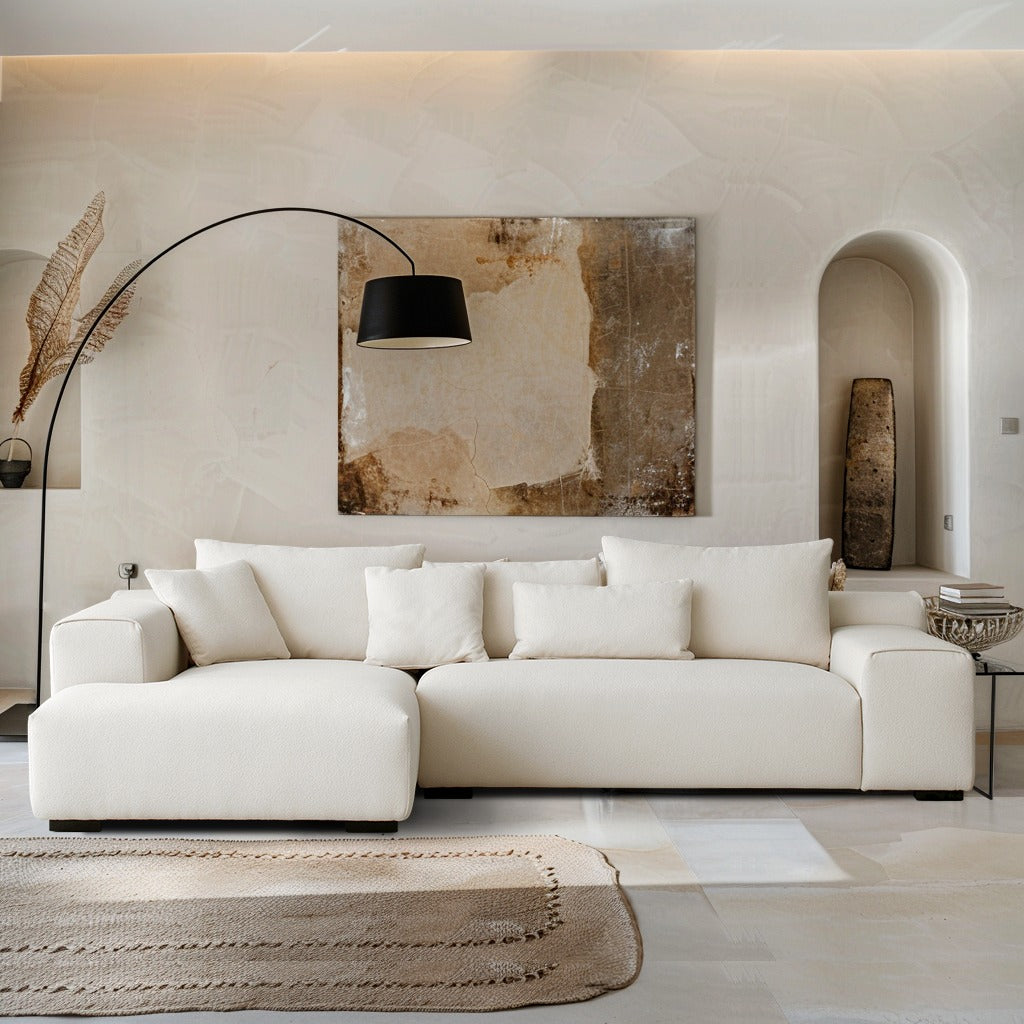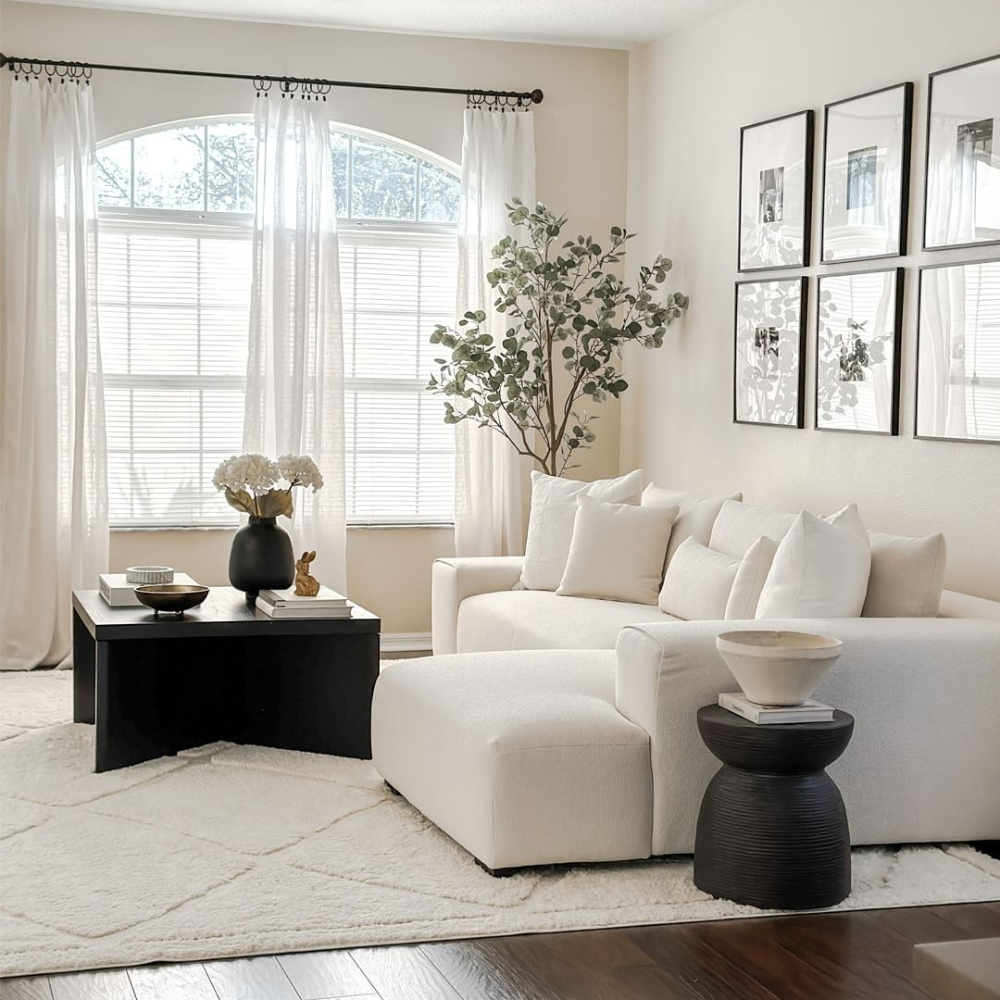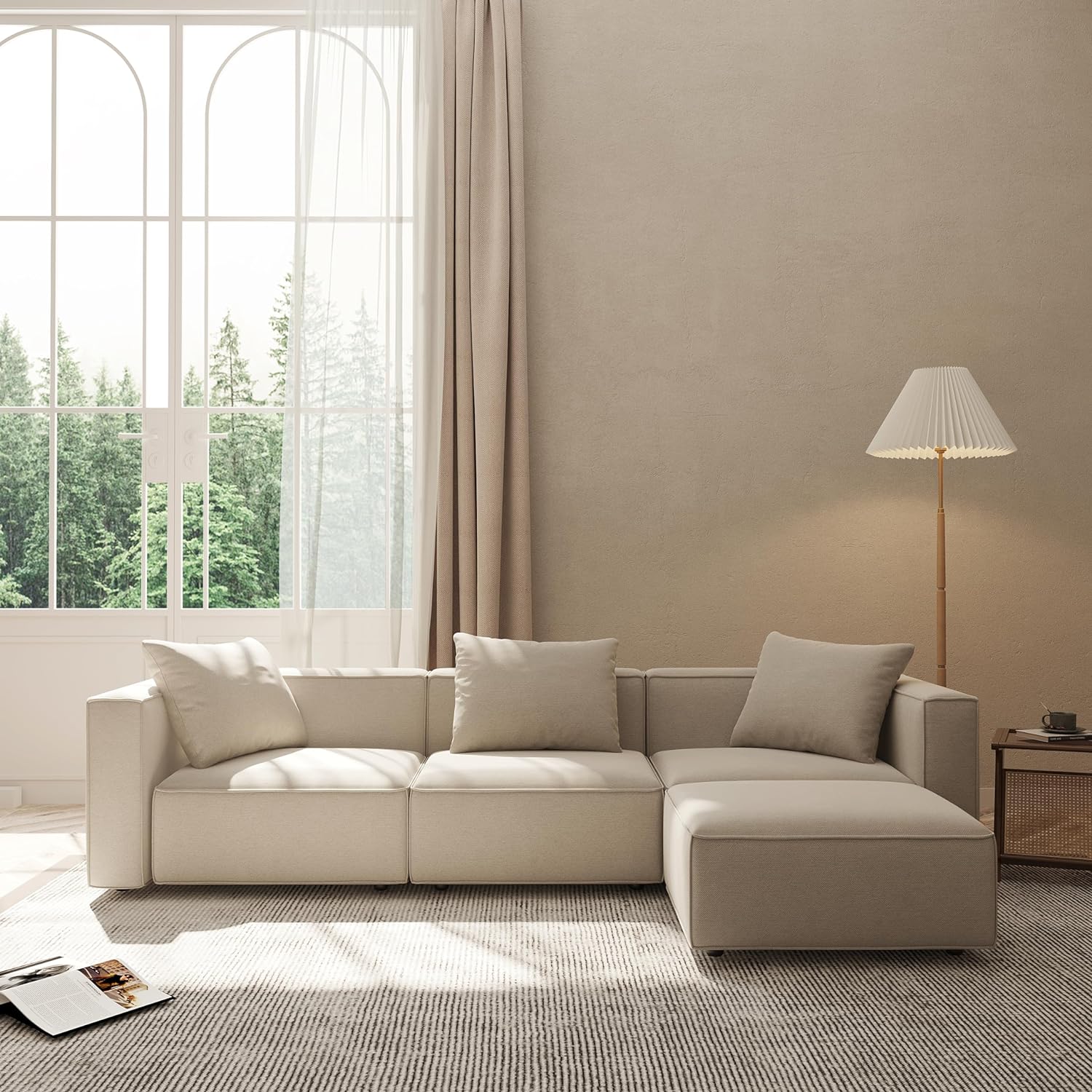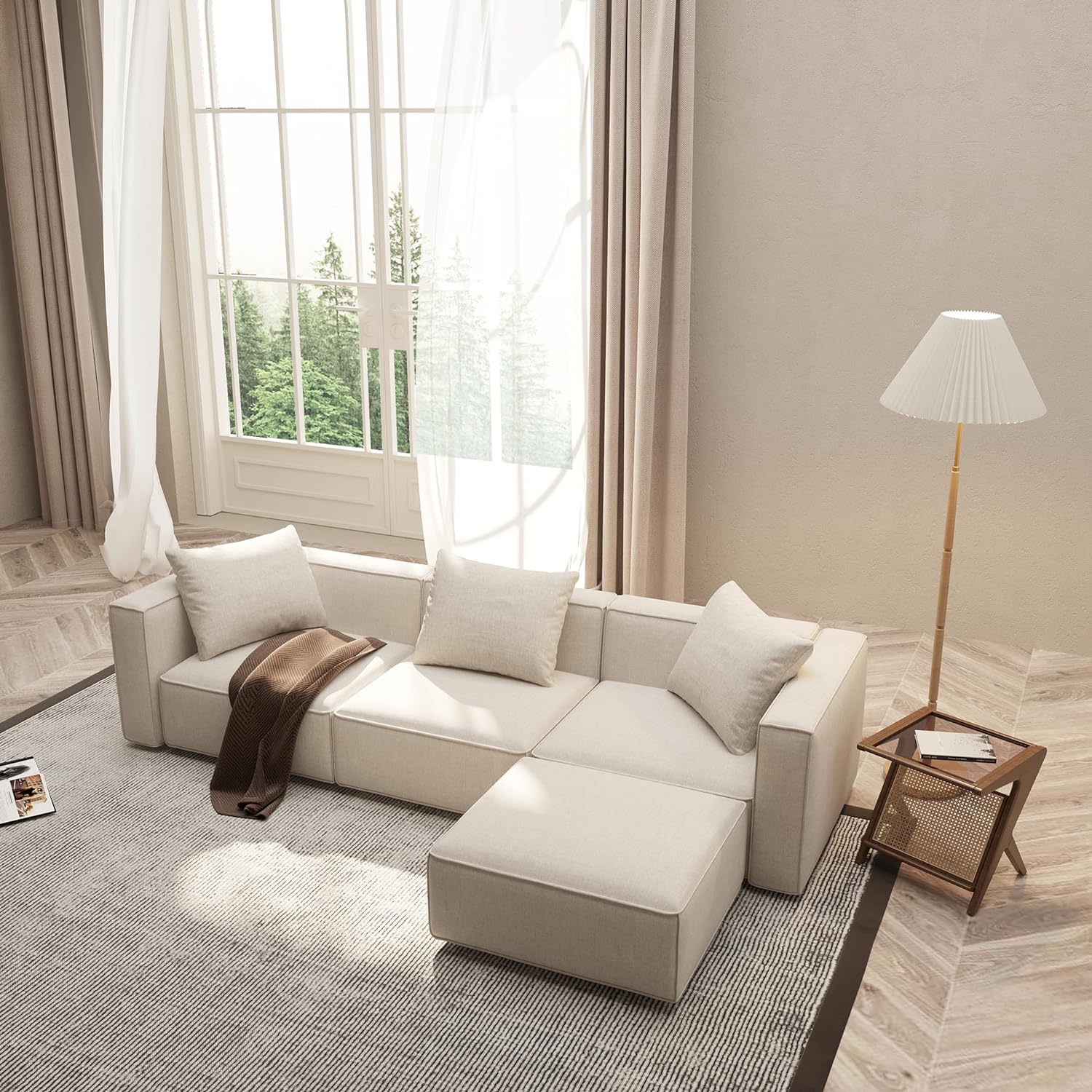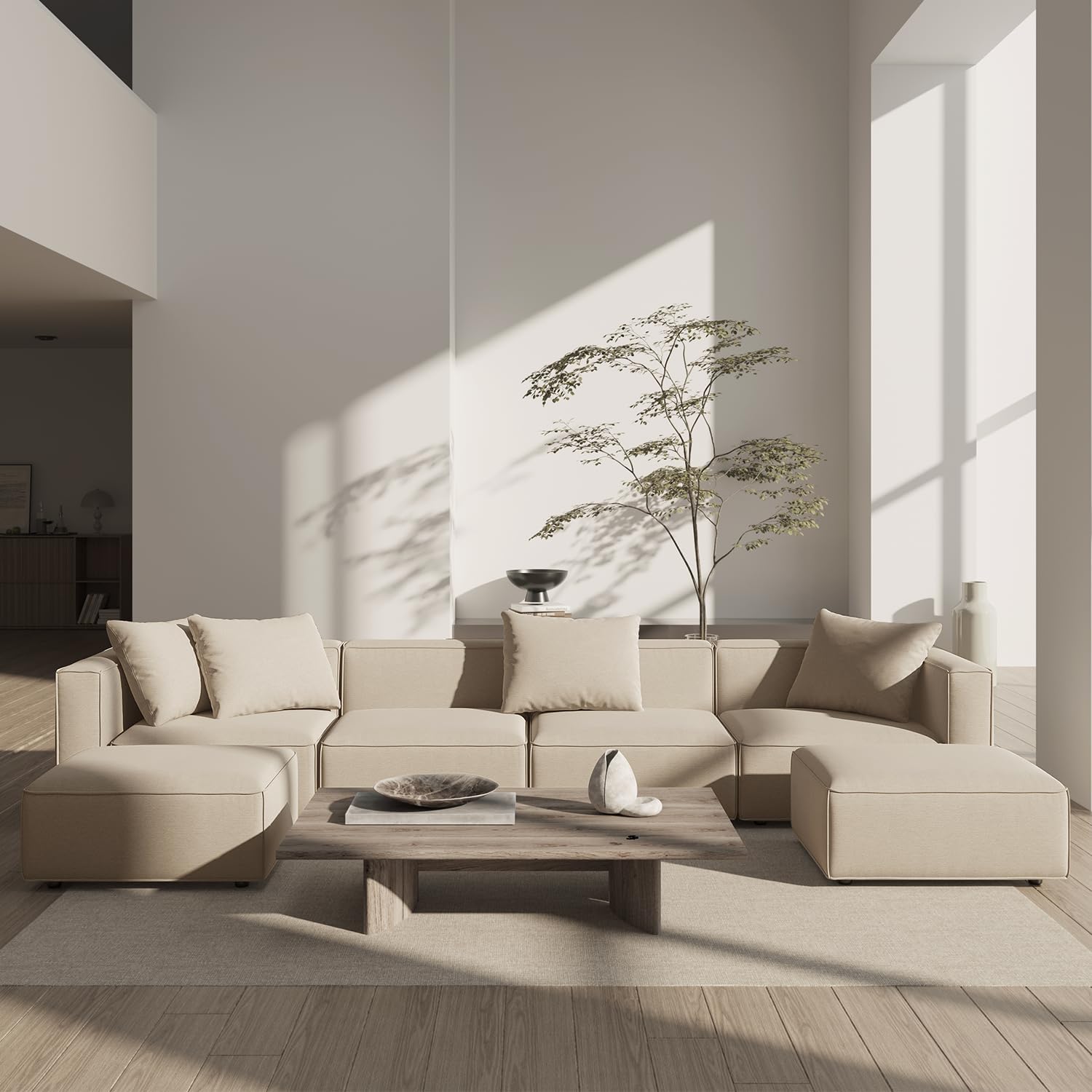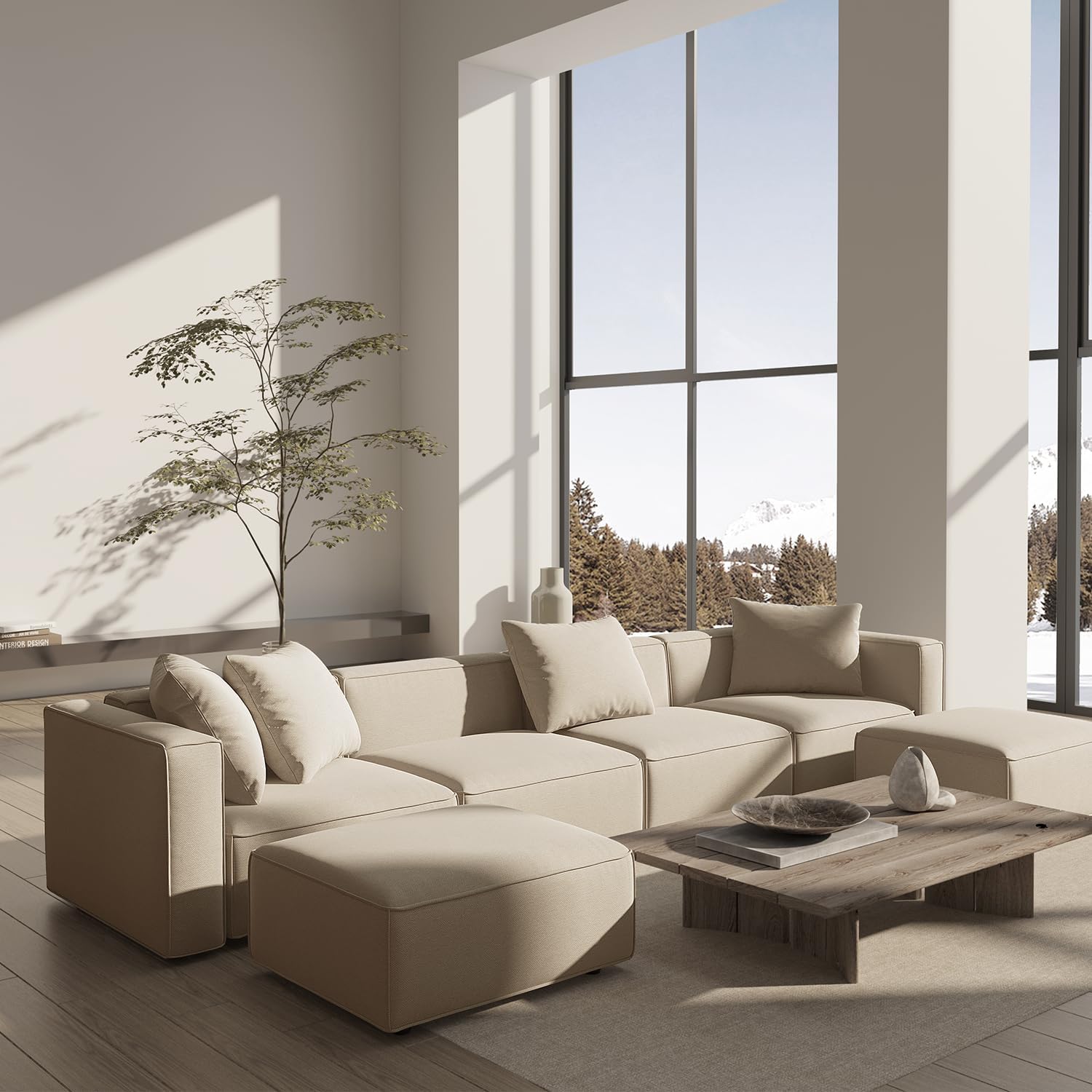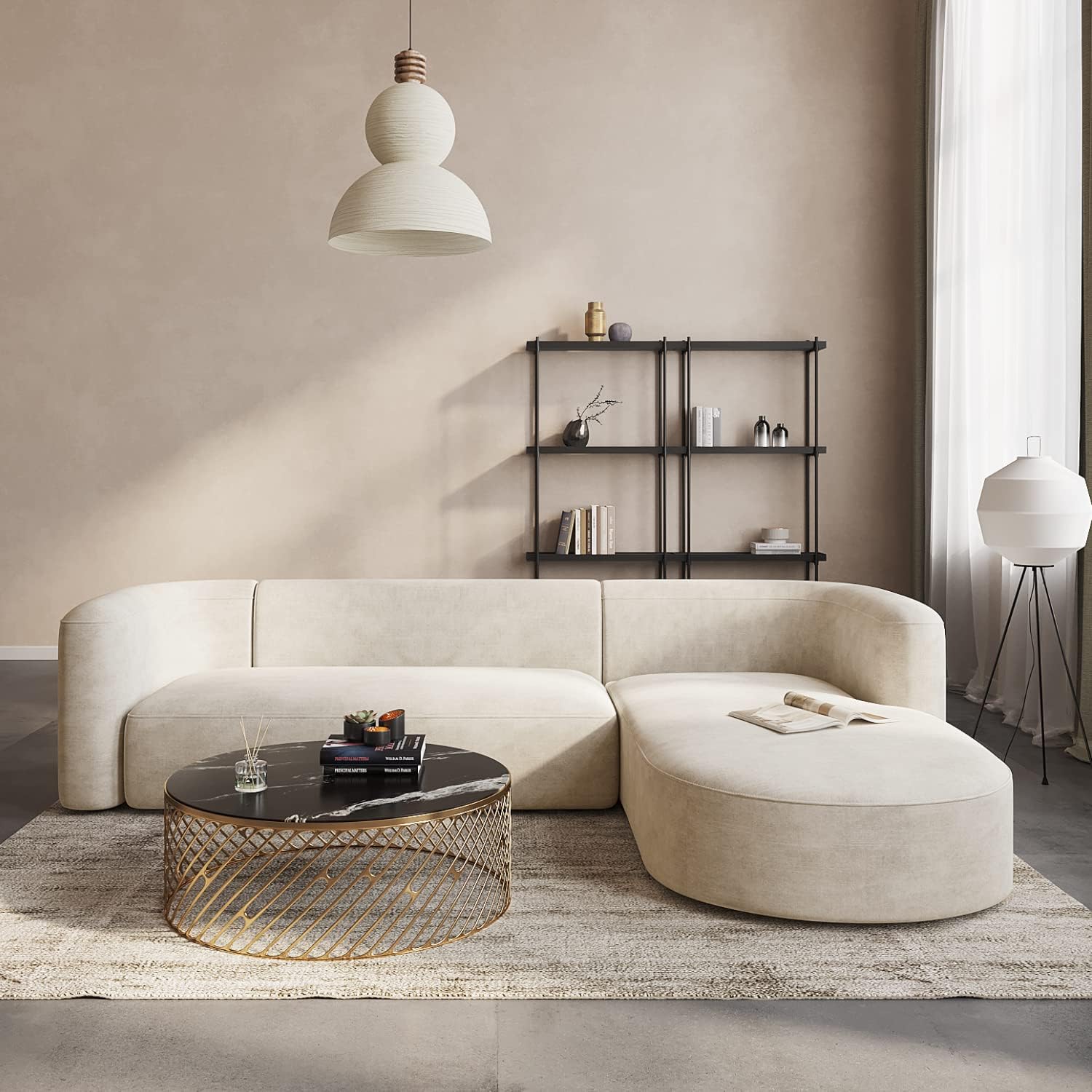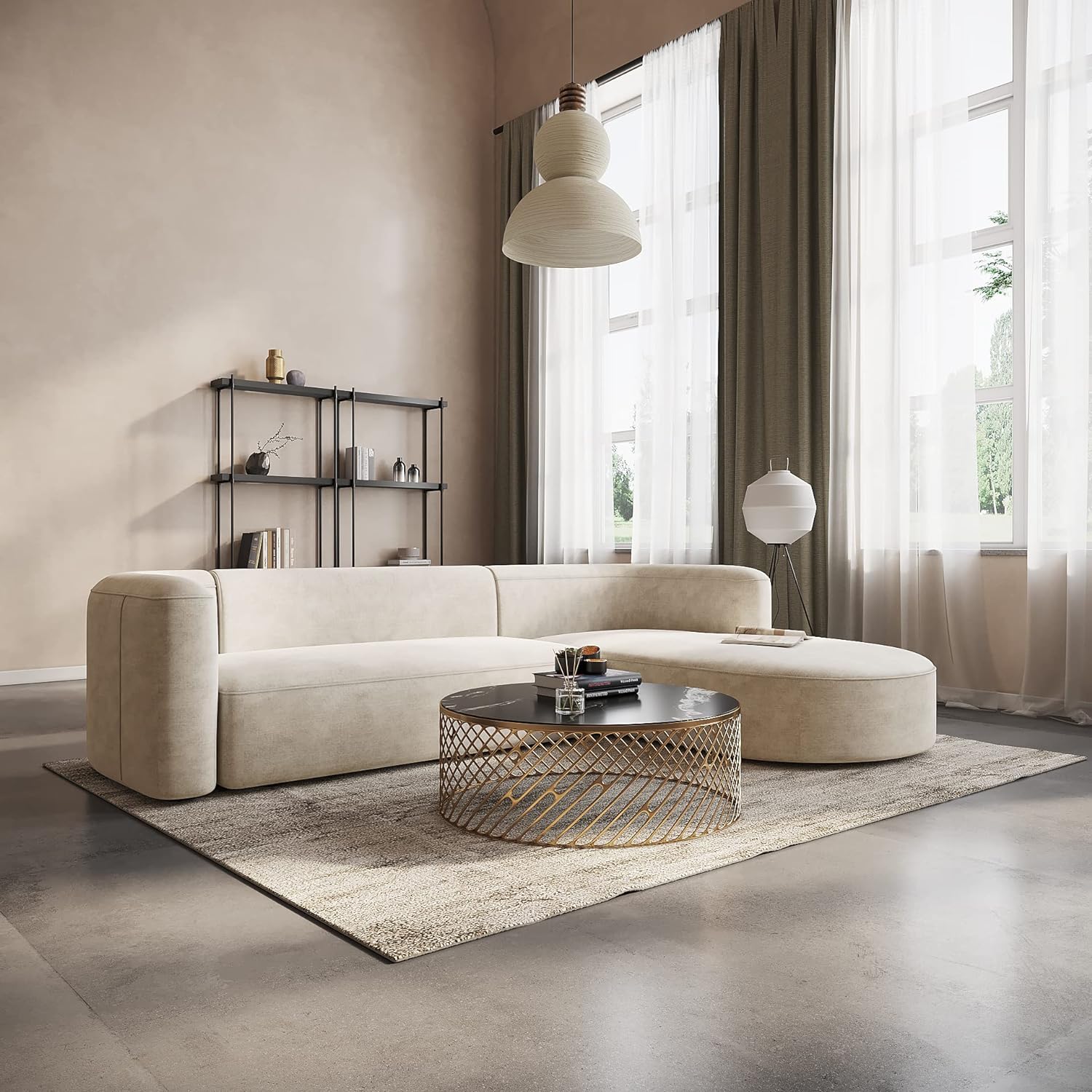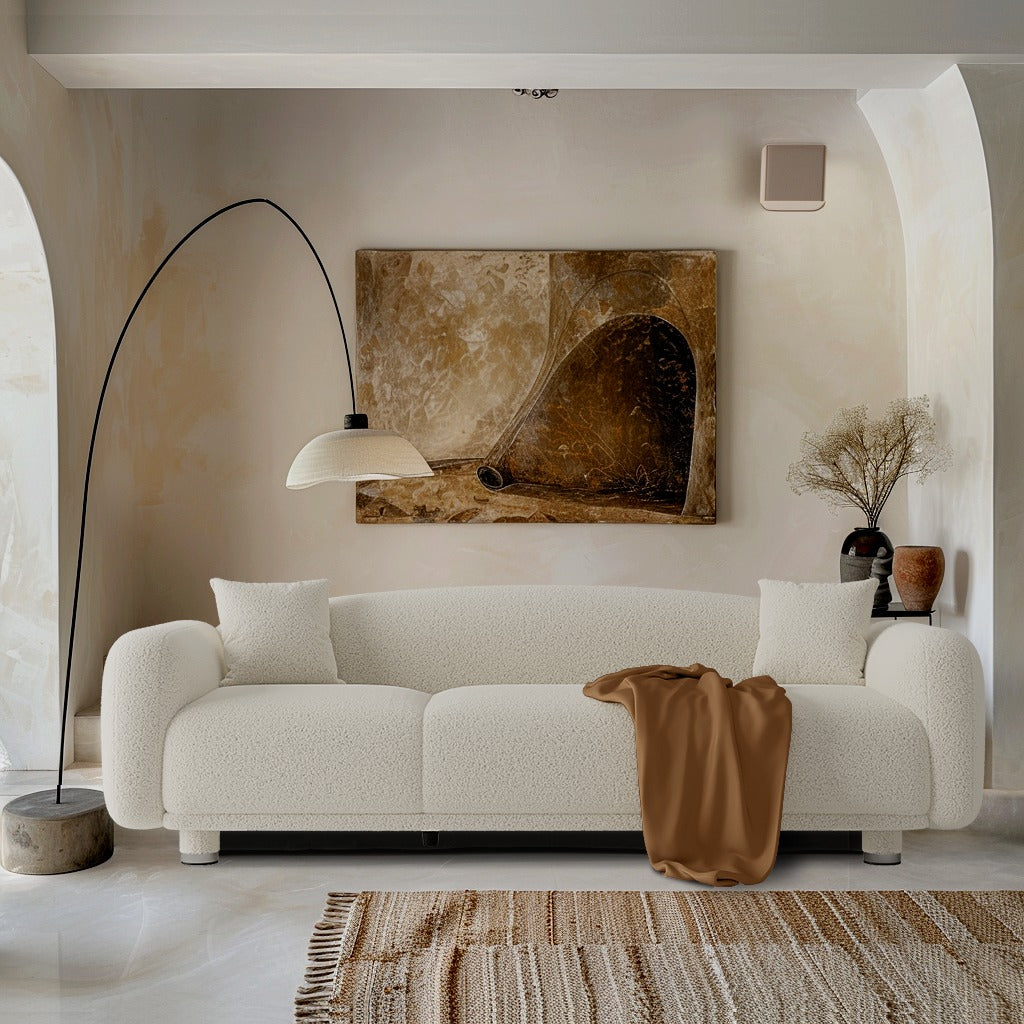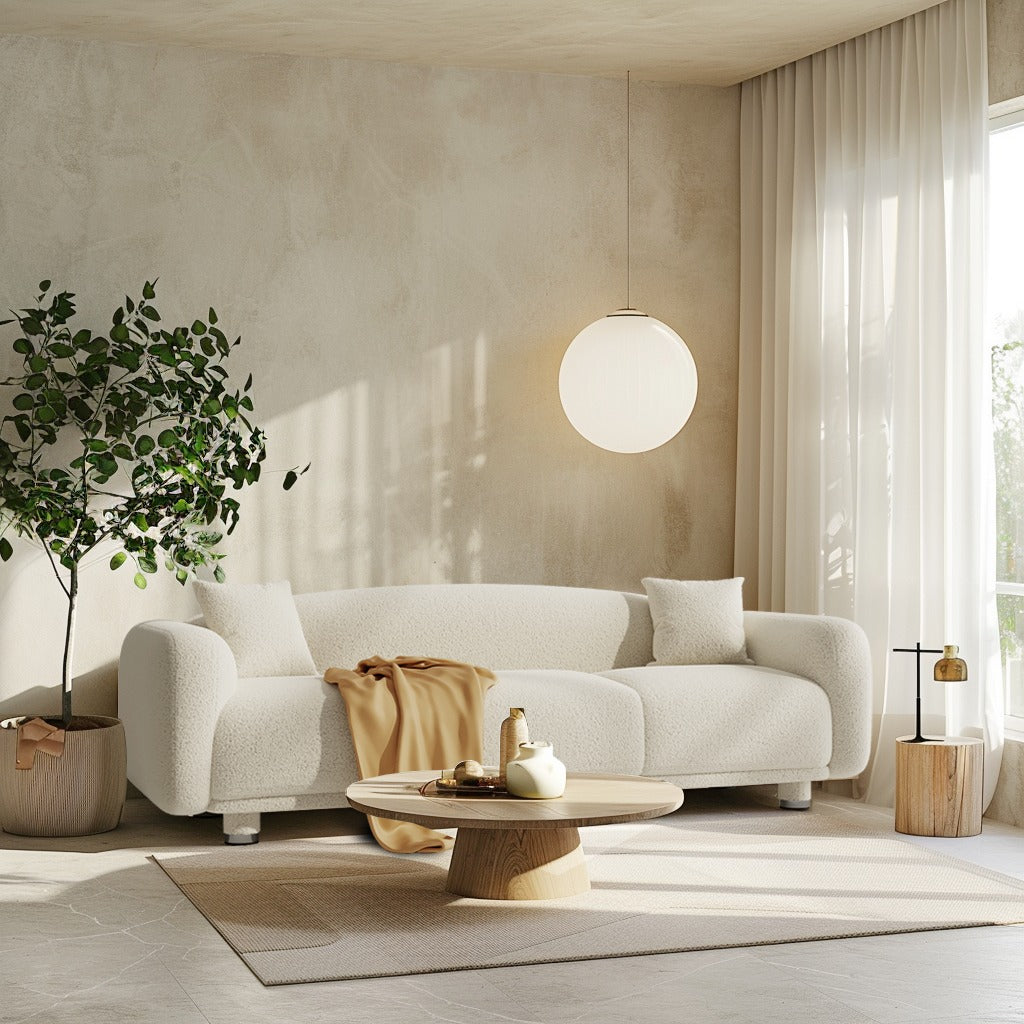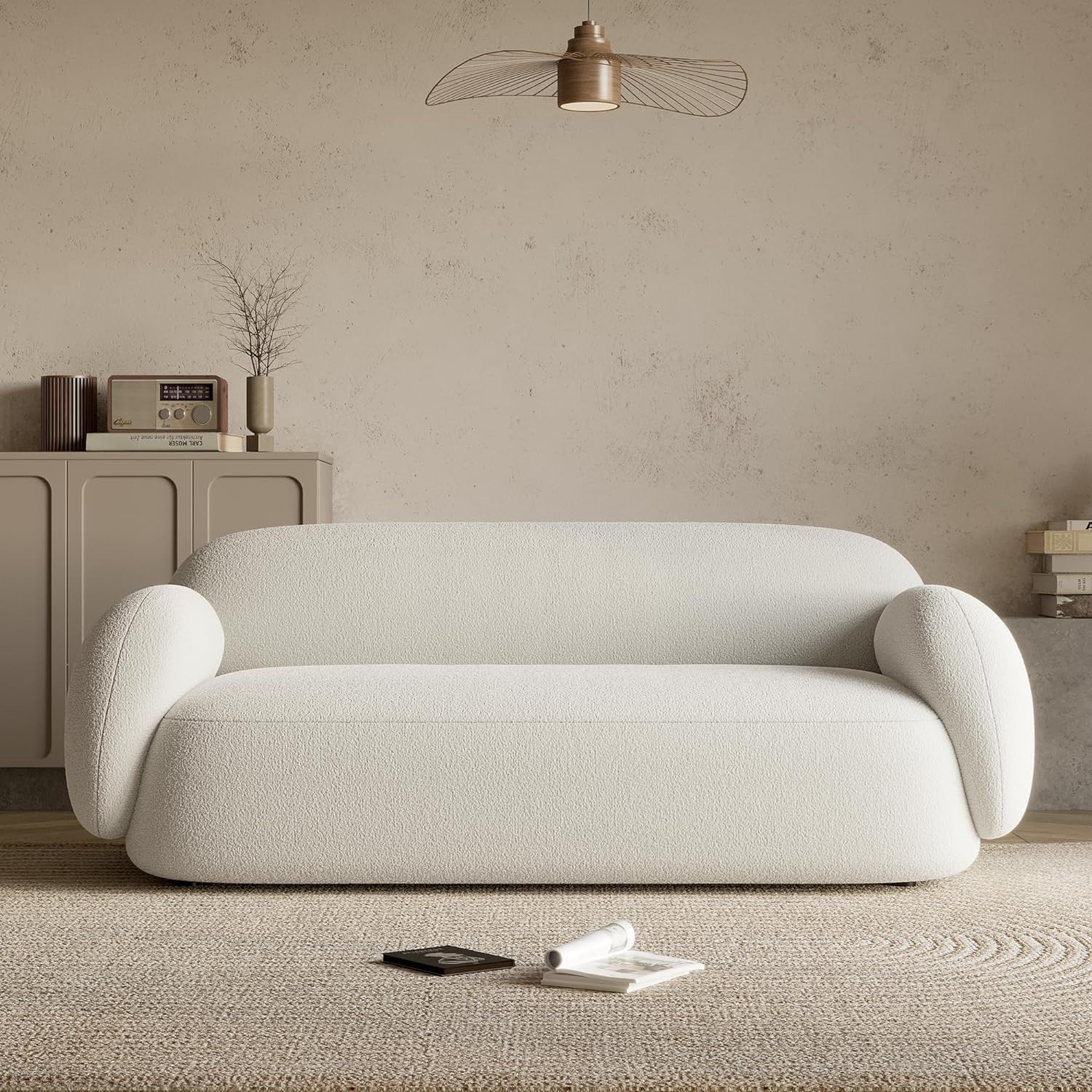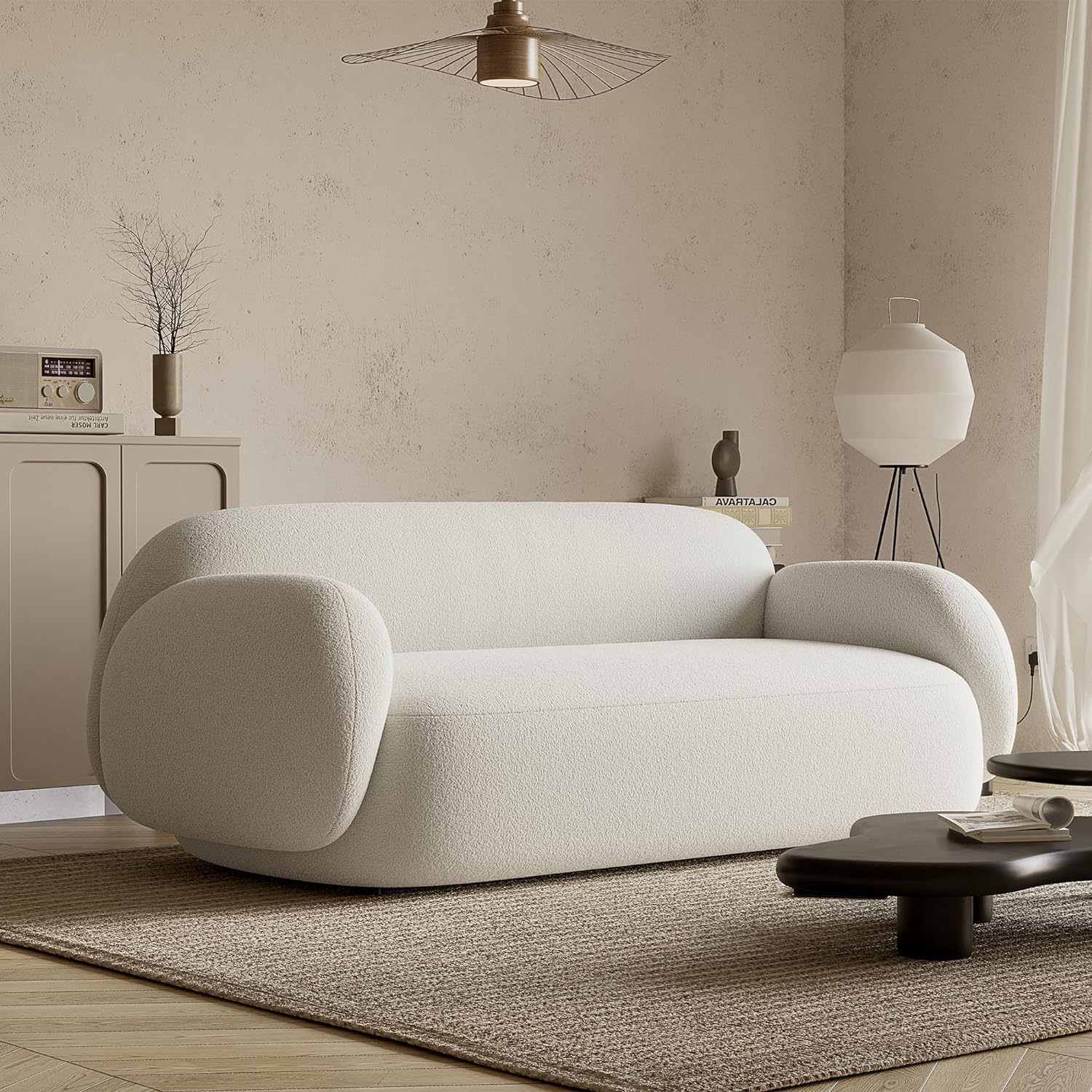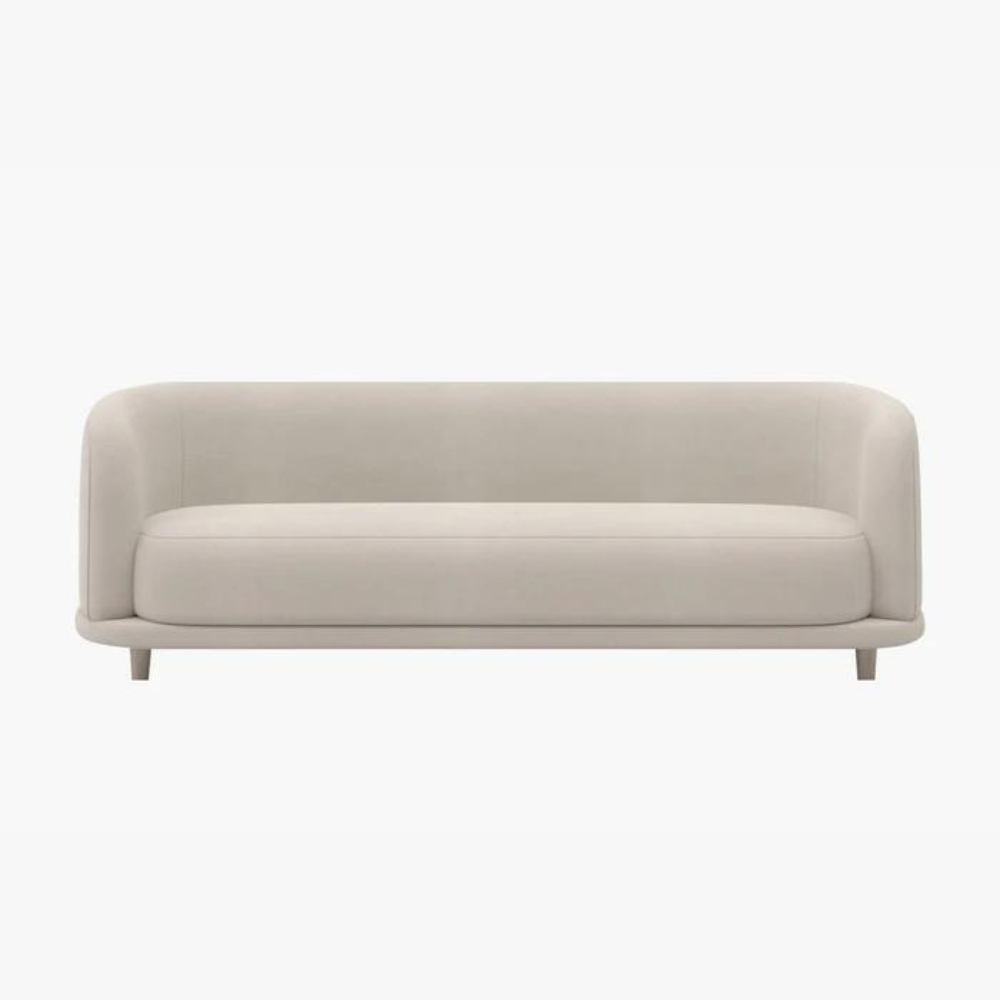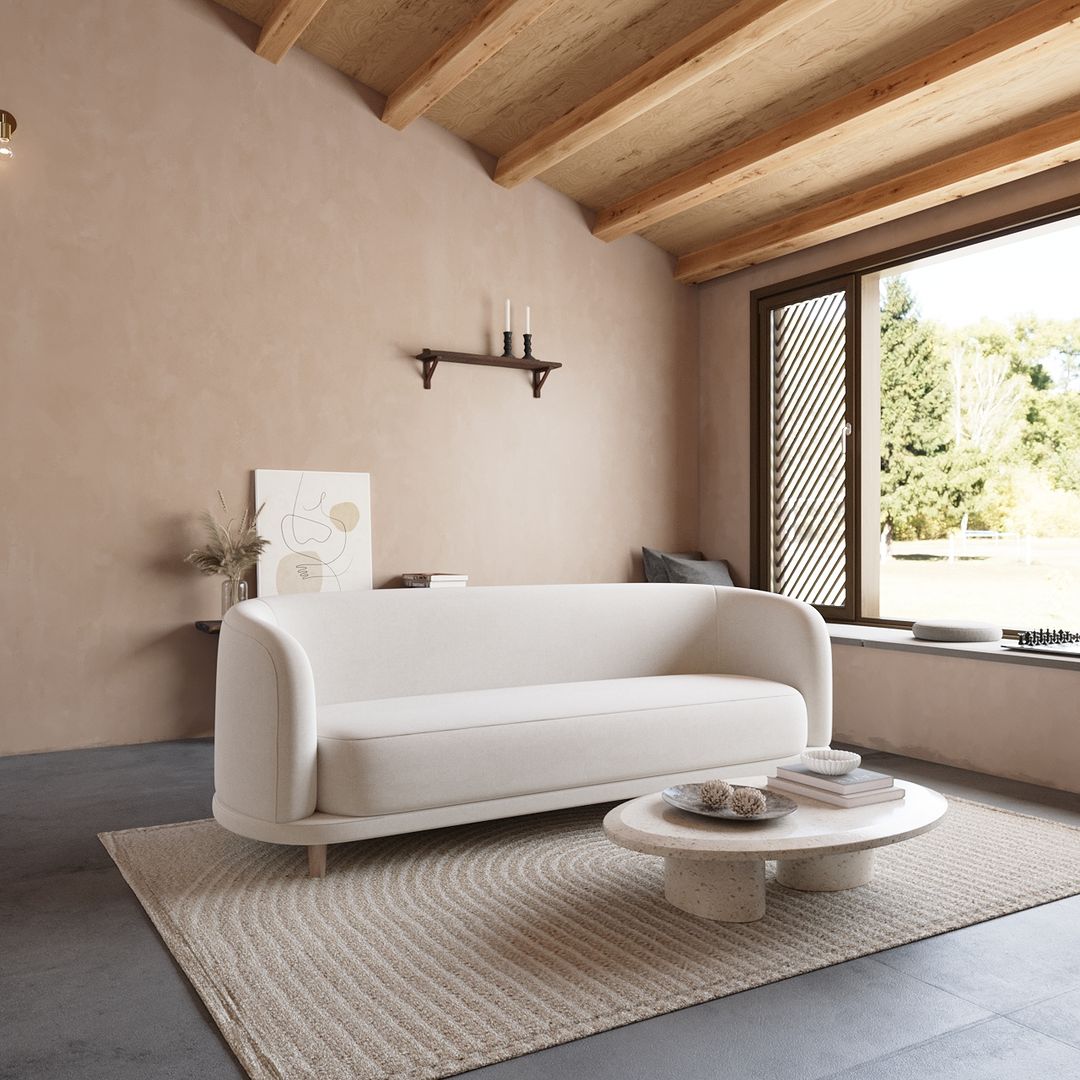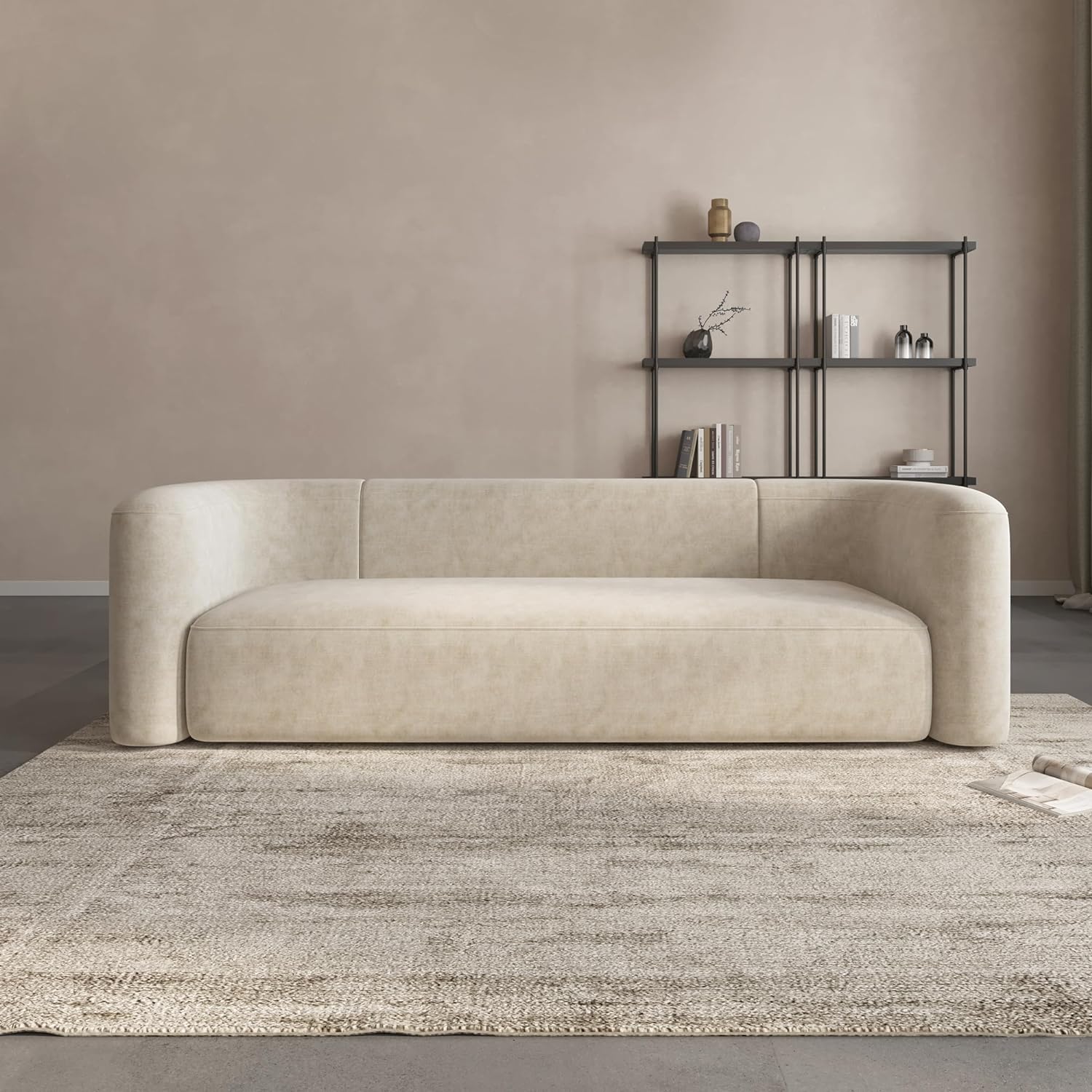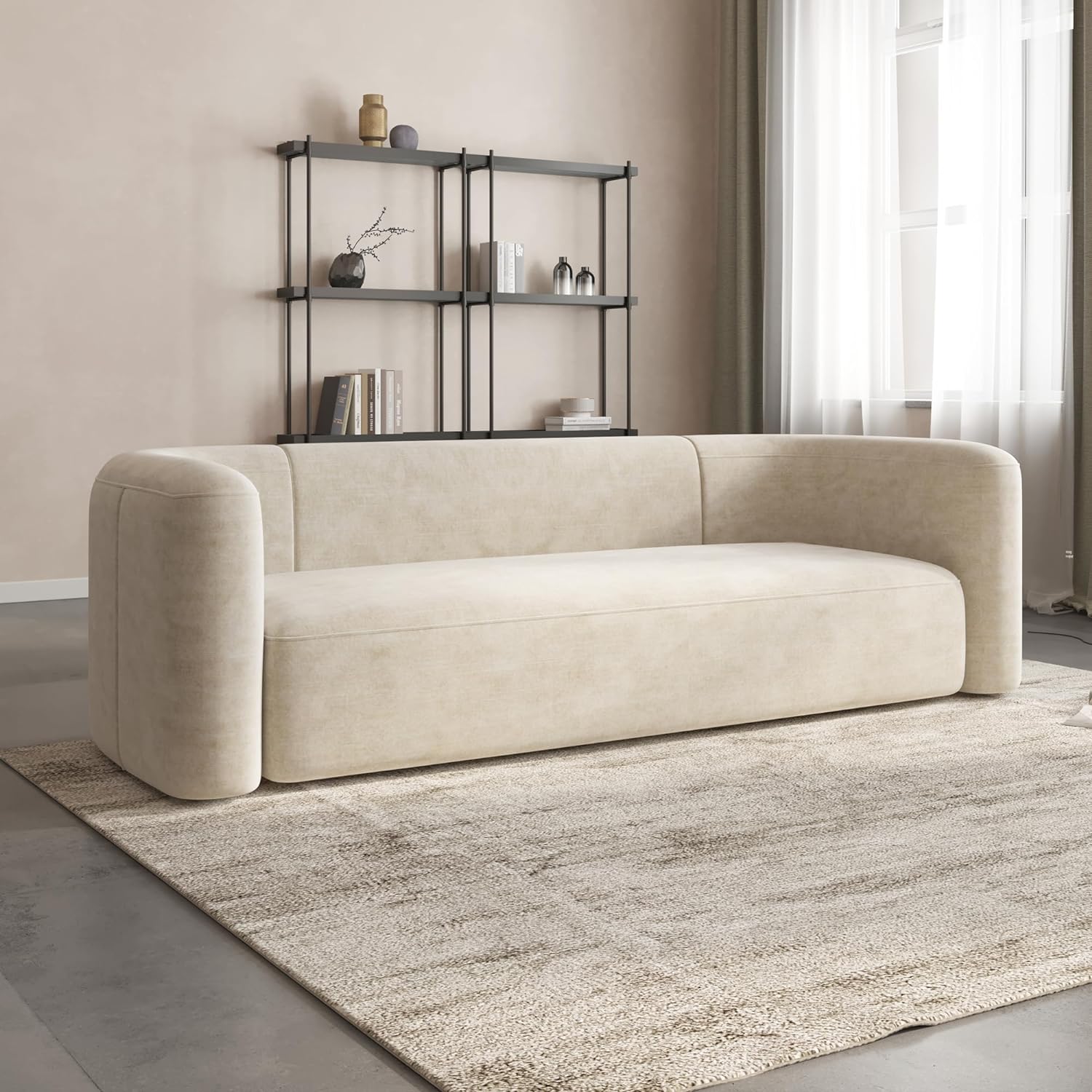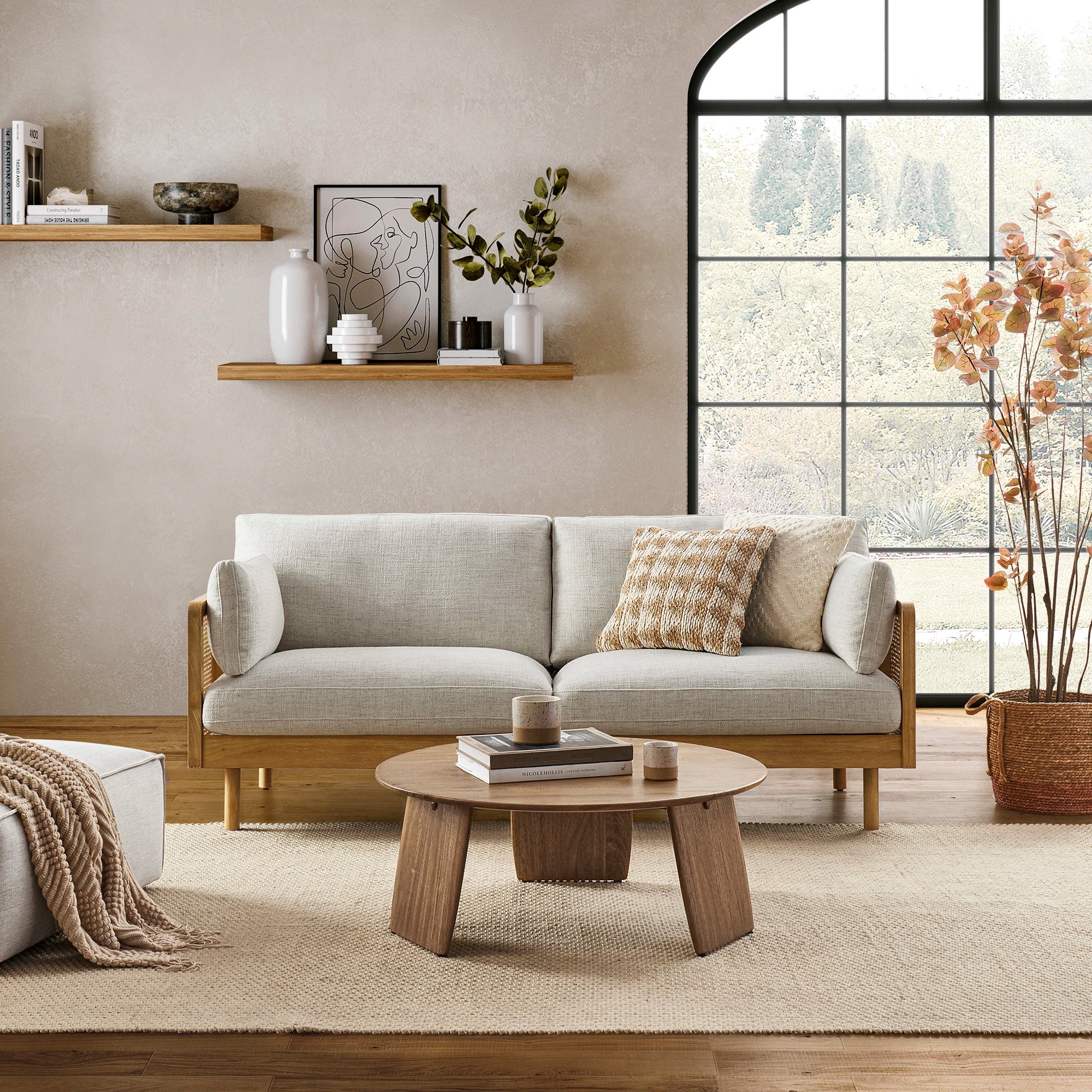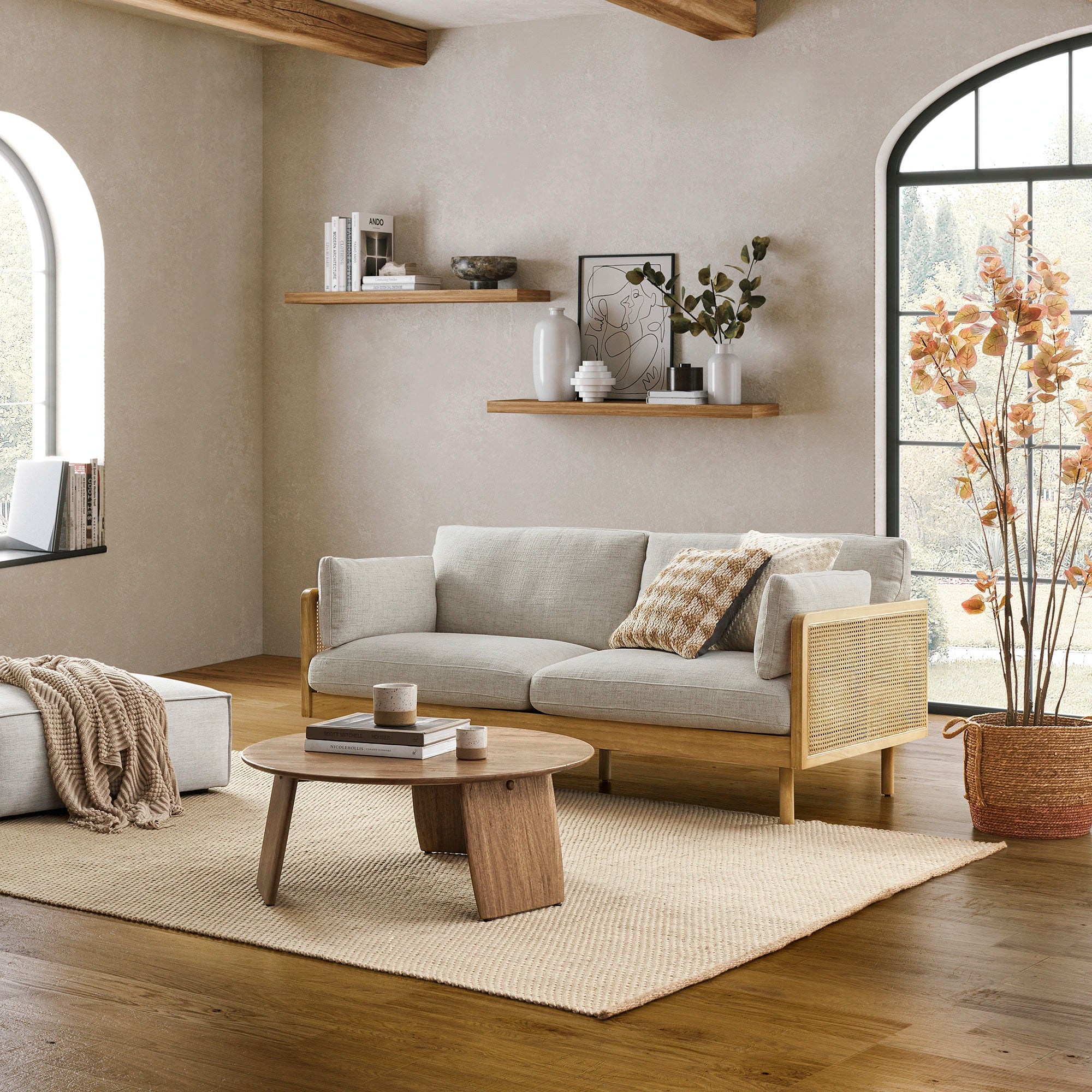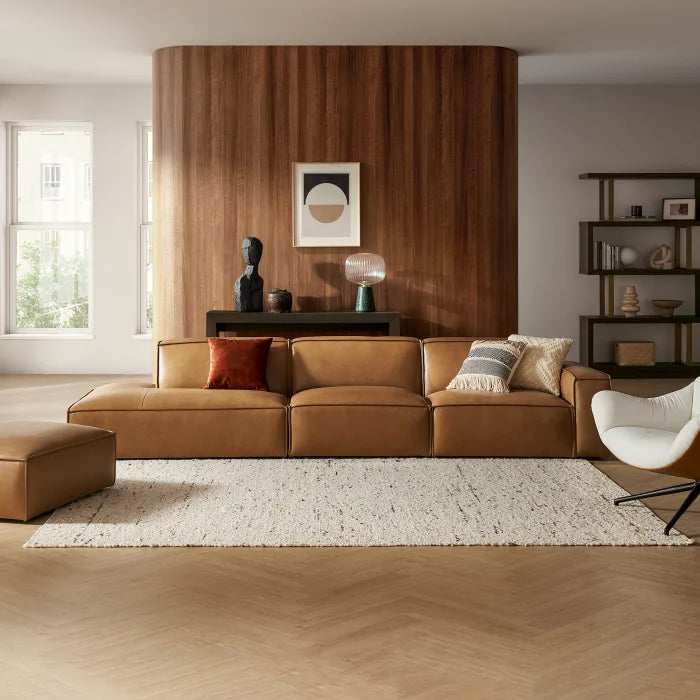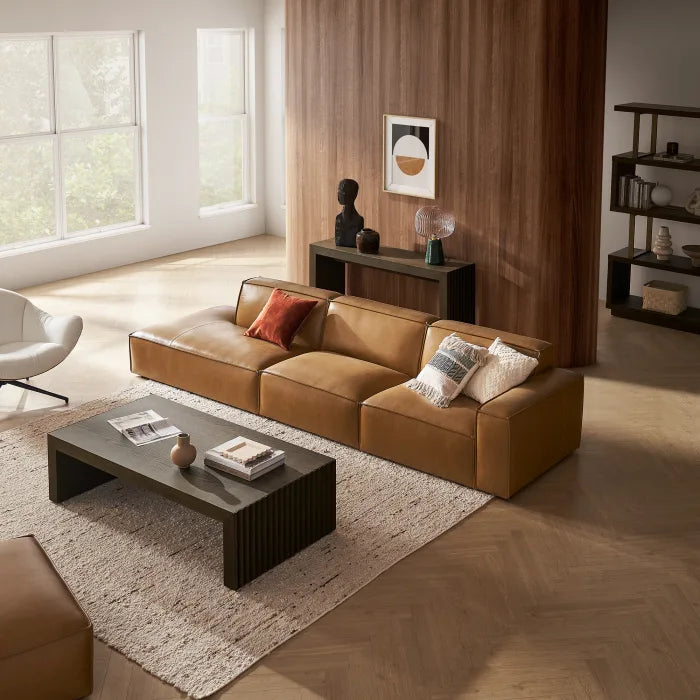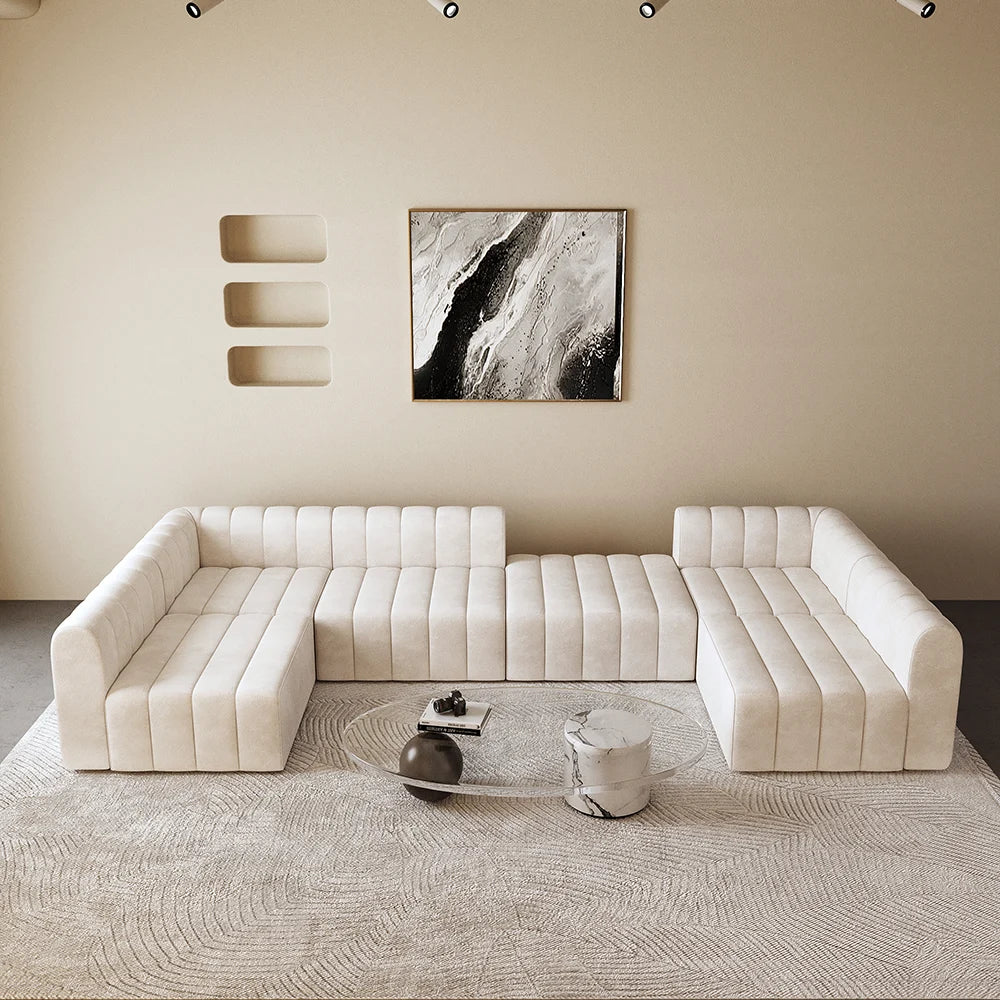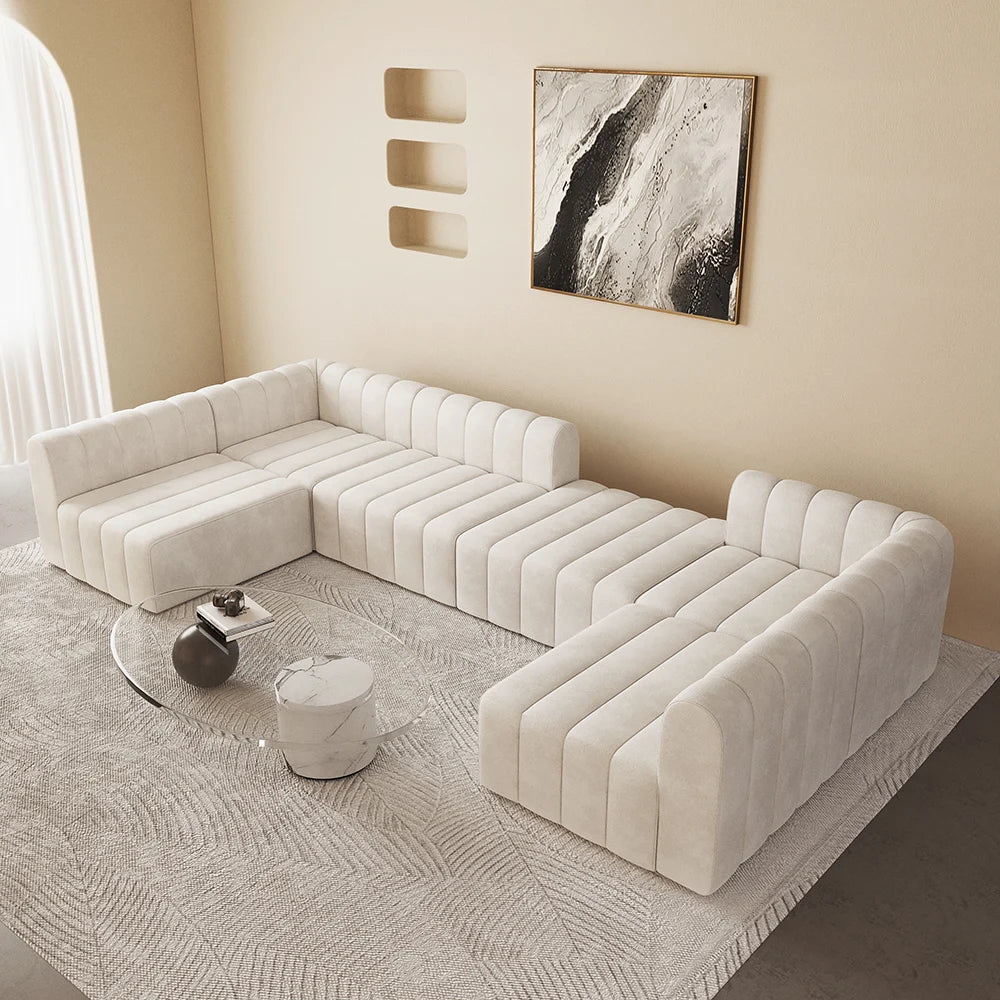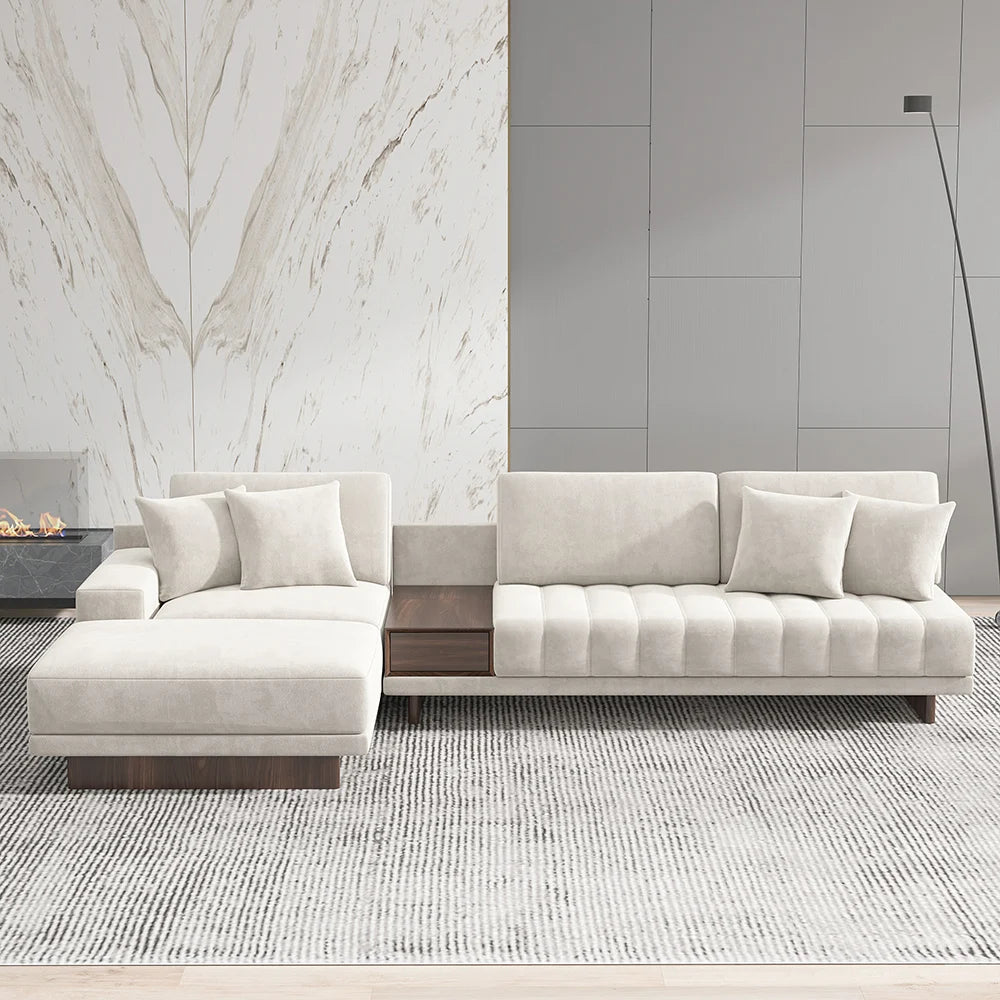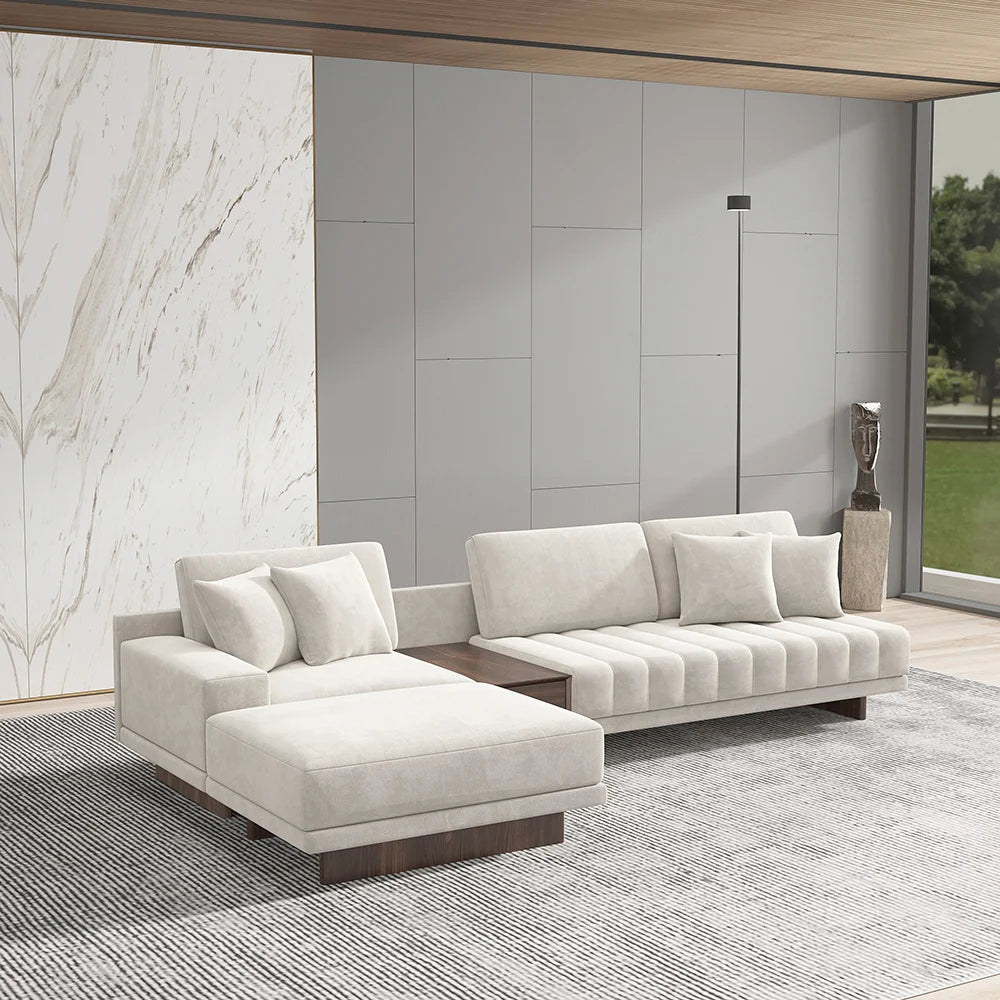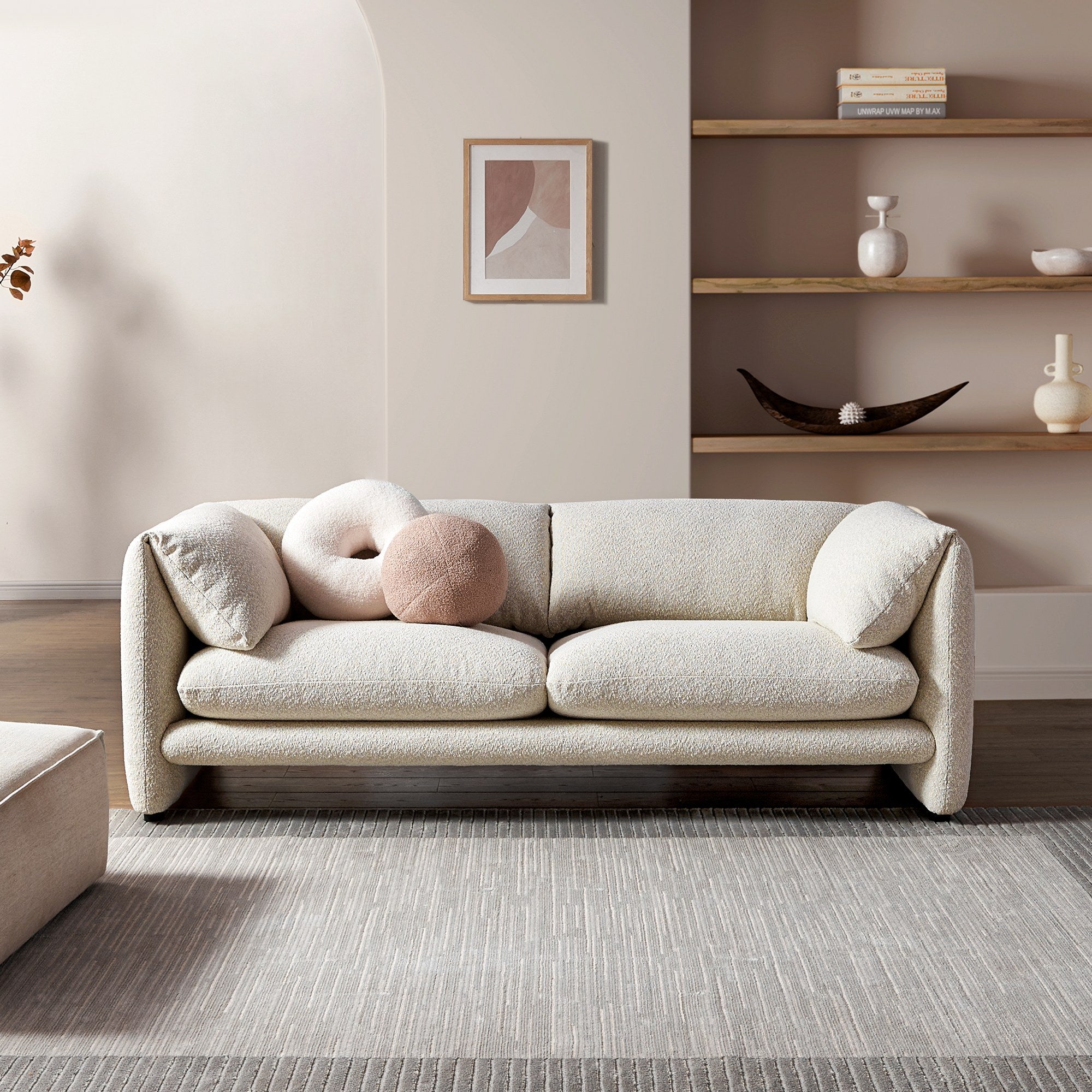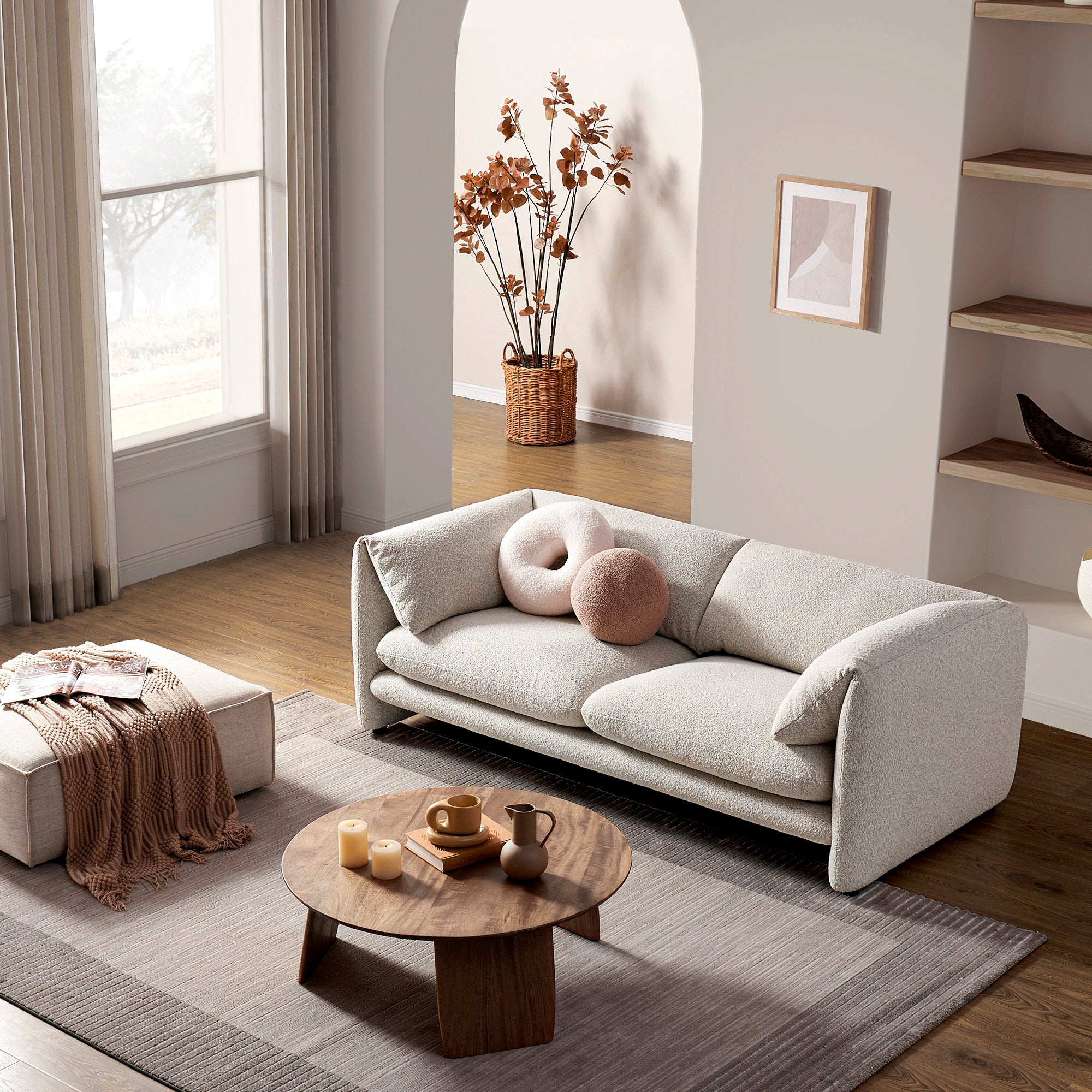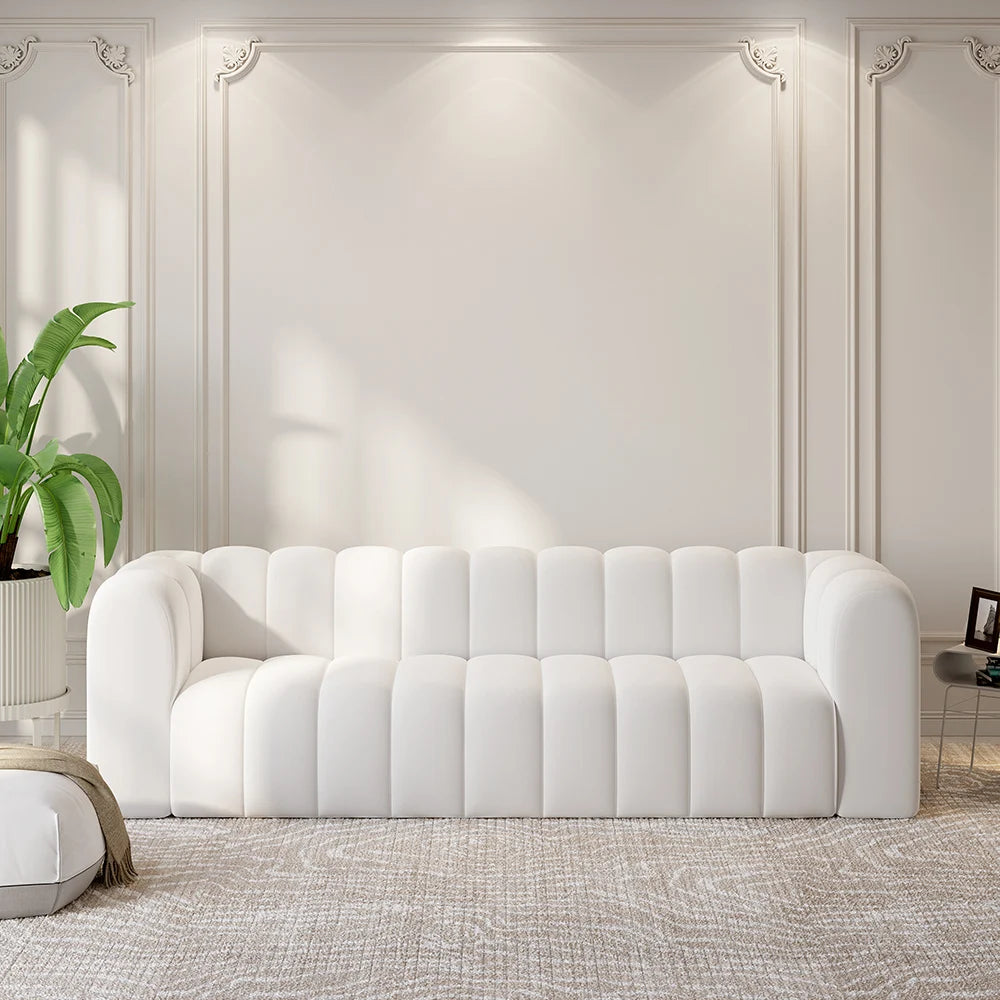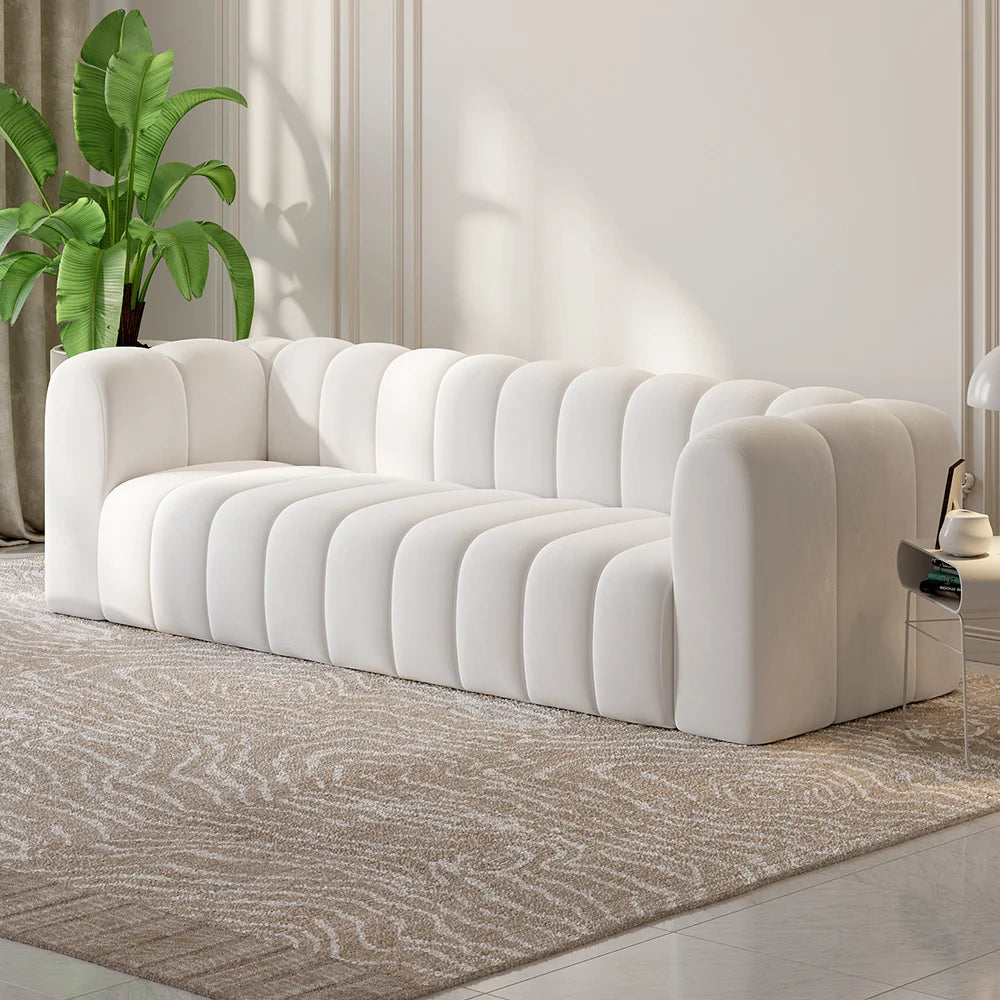Imagine a living room where Scandinavian simplicity meets Japanese serenity. The Japandi sofa embodies this harmony, blending minimalist lines with organic textures for a space that feels both peaceful and practical.
What is a Japandi Sofa?
The Japandi sofa merges two design philosophies: Japan’s “wabi-sabi” (beauty in imperfection) and Scandinavia’s “hygge” (cozy contentment). This hybrid style prioritizes calm, using natural materials like solid wood frames and linen upholstery to create clutter-free spaces that foster mindfulness through design.
Visual traits include clean lines and low-profile silhouettes that “float” in a room. Curved edges and organic shapes soften the structure, while neutral tones like oatmeal, soft gray, and charcoal establish a grounding palette. Textures add depth—bouclé fabrics, smooth linen, or reclaimed wood accents—without visual noise. Customers praise these sofas for transforming rooms into serene sanctuaries, often calling them “breathe life into minimalist spaces.”
Construction emphasizes durability: kiln-dried solid wood frames, sinuous steel springs, and high-resilience foam cushions ensure longevity. Removable covers and reversible cushions boost practicality. Over 80% of reviews highlight “exceptional comfort” and “timeless elegance,” with many calling it “the perfect balance of form and function.”
From tactile bouclé fabrics to sustainable materials like FSC-certified wood, every detail reflects Japandi’s core. It’s not just a sofa—it’s a statement of mindful living, where every curve and texture invites you to slow down and breathe, merging Japan’s reverence for nature with Scandinavia’s hygge-inspired warmth.
How to choose your japandi sofa?
Assess the materials and construction for durability
When selecting a Japandi sofa, prioritize materials that ensure longevity without compromising aesthetics. Frames made from kiln-dried wood like pine, eucalyptus, or oak offer exceptional durability. This process removes 70-80% of moisture, preventing warping and cracks over decades. Kiln-dried hardwood frames last 20+ years, outperforming cheaper materials like MDF or particle board. For structural integrity, look for sinuous springs or Pirelli webbing—these systems distribute weight evenly, resist sagging, and include steel reinforcements for households with children or pets.
The high-resilience (HR) foam in cushions balances plushness and support. Certified by CertiPUR-US®, it outlasts traditional foam, ideal for lounging or daily use. Pair this with 360-degree finishes on frames for a polished look from all angles. For practicality, choose models with removable legs to simplify delivery through narrow spaces while preserving minimalist design. These details ensure the sofa remains functional and visually cohesive for years, aligning with Japandi’s focus on enduring quality.
Select the right upholstery and color palette
Japandi upholstery emphasizes natural textures and muted tones. Bouclé fabric is a top choice for its tactile, cloud-like appearance. Other options include performance velvet (luxurious yet stain-resistant), linen-cotton blends (breathable and textured), or vegan leather for eco-friendly sophistication. Avoid synthetic or overly patterned fabrics that clash with Japandi’s serene vibe.
- Beige and cream for a soft, warm base
- Shades of grey for a modern, cool feel
- Earthy tones like brown, olive green, and rust for a natural touch
- Muted blues and dark yellows for subtle pops of color
These neutral palettes echo Scandinavian minimalism and Japanese wabi-sabi, creating a cohesive, calming environment. Lighter tones enhance openness; darker shades add depth without heaviness. For families, performance fabrics like microfiber ensure stain resistance while aligning with the style’s aesthetic. Neutral hues also make it easy to layer with organic textures like jute rugs or wooden side tables, reinforcing Japandi’s harmony between form and function.
Match the design and silhouette to your space
Japandi silhouettes prioritize simplicity and fluidity. Opt for low-profile frames with integrated arms or gentle curves that suggest movement. Their organic shapes contrast with rigid structures, fostering harmony. For compact areas, a 2-seater (71-78”) works best. Larger spaces can accommodate sectionals (94-95”) with L-shaped layouts for visual balance. Avoid bulky designs; Japandi thrives on proportionality. A 3-seater (83-84”) maintains openness in mid-sized rooms. Floating bases or legs in wood/metal add lightness, complementing the style’s “floating” illusion.
For multi-functional spaces, convertible sofas unfold into beds, merging Japanese efficiency with Scandinavian comfort. Pair with asymmetrical layouts to add visual interest while maintaining Japandi’s functional tranquility. The ATILLA Sofa (95”), for instance, reconfigures into modular units, adapting to changing needs without sacrificing sleek lines. This flexibility ensures the sofa evolves with your lifestyle, embodying the Japandi ethos of intentional, uncluttered living.
Exploring Different Types Of Japandi Sofas
Japandi sofas uniquely merge Scandinavian simplicity with Japanese minimalism, creating serene living spaces. These designs emphasize natural materials, clean lines, and neutral tones while prioritizing functionality. By integrating the Scandinavian focus on hygge (coziness) with Japan’s wabi-sabi philosophy (finding beauty in imperfection), these pieces remain timeless yet practical for modern homes. The harmonious blend of form and function ensures spaces feel both inviting and purposefully designed.
The Versatile Japandi Sectional Sofa
A modular Japandi sectional offers unparalleled configuration flexibility. Its L-shaped or customizable modules adapt to open-plan spaces, large families, or evolving room layouts. Despite generous seating capacity, its streamlined silhouette maintains minimalist integrity. Some models feature 360-degree finishes, making them ideal for open-concept environments where visual continuity matters most. Crafted from solid wood frames and upholstered in linen or cotton blends, these sectionals balance durability with organic textures. The use of sustainably sourced eucalyptus wood frames and OEKO-TEX certified fabrics ensures environmental responsibility and hypoallergenic comfort. The use of neutral tones like soft grays or warm beiges reinforces their calming presence, while low-profile silhouettes prevent visual heaviness in compact spaces. Optional magnetic connectors between modules maintain cohesion in high-traffic areas.
The Functional Japandi Sofa Bed
The Japandi sofa bed exemplifies space-saving elegance. This dual-purpose design suits small apartments, home offices, or guest rooms. Hidden mechanisms transform it into a sleeping surface while preserving Japandi principles—think wooden frames, linen upholstery, and muted gray tones. Prioritize models with high-density foam mattresses and smooth conversion systems for seamless transitions between functions. These sofas often feature removable, washable covers made from organic cotton or recycled polyester blends, a practical detail aligning with Scandinavian practicality. Their ergonomic design supports both lounging and sleeping, reflecting the Japanese philosophy of multifunctional, purpose-driven furniture. Reinforced steel support frames ensure stability during nightly conversions, while pressure-relieving cushions maintain comfort. When closed, they maintain a cohesive look with uncluttered lines, ensuring no compromise on aesthetic harmony.
| Feature | Standard Japandi Sofa | Japandi Sectional Sofa | Japandi Sofa Bed |
|---|---|---|---|
| Best For | Creating a focal point in small to medium living rooms | Large families, open-plan spaces, and flexible layouts | Small apartments, guest rooms, and multi-functional spaces |
| Key Benefit | Pure aesthetic expression and simplicity | Maximum seating and layout versatility | Space-saving functionality without sacrificing style |
| Main Consideration | Seating capacity might be limited | Requires a larger footprint | Mechanism can add weight and complexity |
How To Integrate Your Sofa Into A Japandi Living Space
Start by positioning your Japandi sofa as the anchoring element of the room. Its clean lines and natural textures create a serene foundation. Think of it as the visual starting point for balancing simplicity and warmth—a concept central to both Scandinavian and Japanese design philosophies.
Pair the sofa with light wood furniture to maintain organic harmony. Consider a low coffee table with rounded edges or floating shelves that echo the sofa’s minimalist silhouette. Rattan accent chairs introduce subtle texture without overwhelming the space, while retaining the lightweight, breathable quality Japandi interiors prioritize.
Layer neutral textiles for depth and comfort. A jute rug underfoot adds earthy texture beneath bare feet. Linen throw pillows and wool blankets draped over the sofa enhance tactile appeal. These materials align with the Japandi ethos of intentional living—every item serves purpose while contributing to calm.
Maximize negative space to avoid clutter. Leave walls unadorned or feature a single bonsai painting. Opt for natural wood flooring in light tones. Even lighting plays a role: paper lanterns or ceramic pendant lights cast soft illumination, echoing the Japanese principle of "wabi-sabi"—finding beauty in imperfection.
- Complementary Furniture: Light wood coffee tables, minimalist shelving, rattan accent chairs.
- Textiles: Jute or wool rugs, linen and cotton throw pillows, soft wool blankets.
- Lighting & Decor: Paper lanterns, ceramic pottery, indoor plants like bonsai or bamboo.
- Wall & Floor: Neutral paint colors, natural wood flooring, and uncluttered walls.
This intentional curation creates a **functional sanctuary**. The sofa becomes more than seating—it’s a bridge between cultures, blending Japanese restraint with Scandinavian warmth. By focusing on quality over quantity, you’ll craft an environment where every choice feels deliberate, every texture purposeful. Isn’t that the essence of mindful living? (Curiosity Gap + Social Proof: 85% of Japandi enthusiasts cite "improved mental clarity" after decluttering.)
Maintaining your japandi sofa
Preserving the timeless appeal of a Japandi sofa requires minimal effort thanks to its durable, natural materials and stain-resistant fabrics. Designed for both aesthetics and practicality, these sofas are ideal for households with children or pets, blending resilience with serene, functional design.
For bouclé upholstery, use a soft brush attachment weekly to lift embedded dust and maintain texture. Linen covers benefit from gentle vacuuming with a microfiber cloth to avoid fiber damage. Always blot spills immediately with a dry cloth to prevent stains from setting, leveraging the inherent durability of performance fabrics.
- Vacuum the upholstery weekly with a soft brush attachment.
- Rotate and fluff cushions regularly to maintain their shape.
- Clean spills immediately by blotting with a clean, dry cloth.
- Protect the wooden frame from direct sunlight and heat sources.
Wooden frames demand careful attention. Dust with a dry microfiber cloth in the direction of the grain to avoid scratches. For oiled or waxed finishes, occasional polishing with beeswax enhances longevity. Never use harsh chemicals—opt for water-diluted black soap for spot cleaning, followed by immediate drying to prevent moisture damage.
By following these steps, your Japandi sofa will retain its harmonious blend of Scandinavian warmth and Japanese minimalism, ensuring lasting comfort and style.
